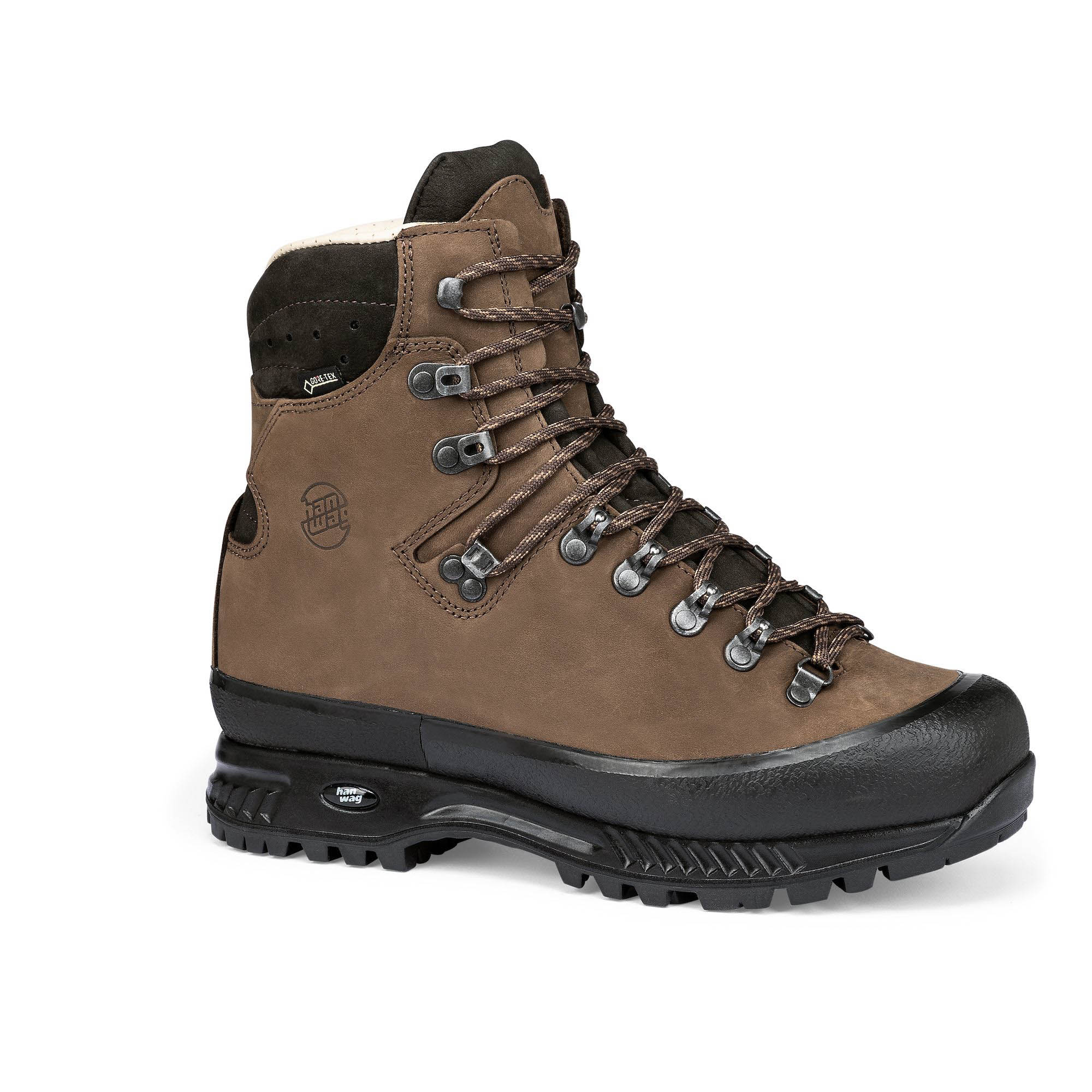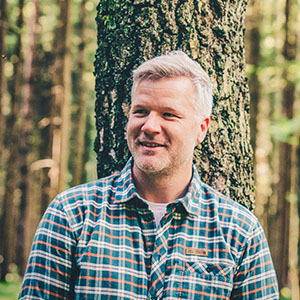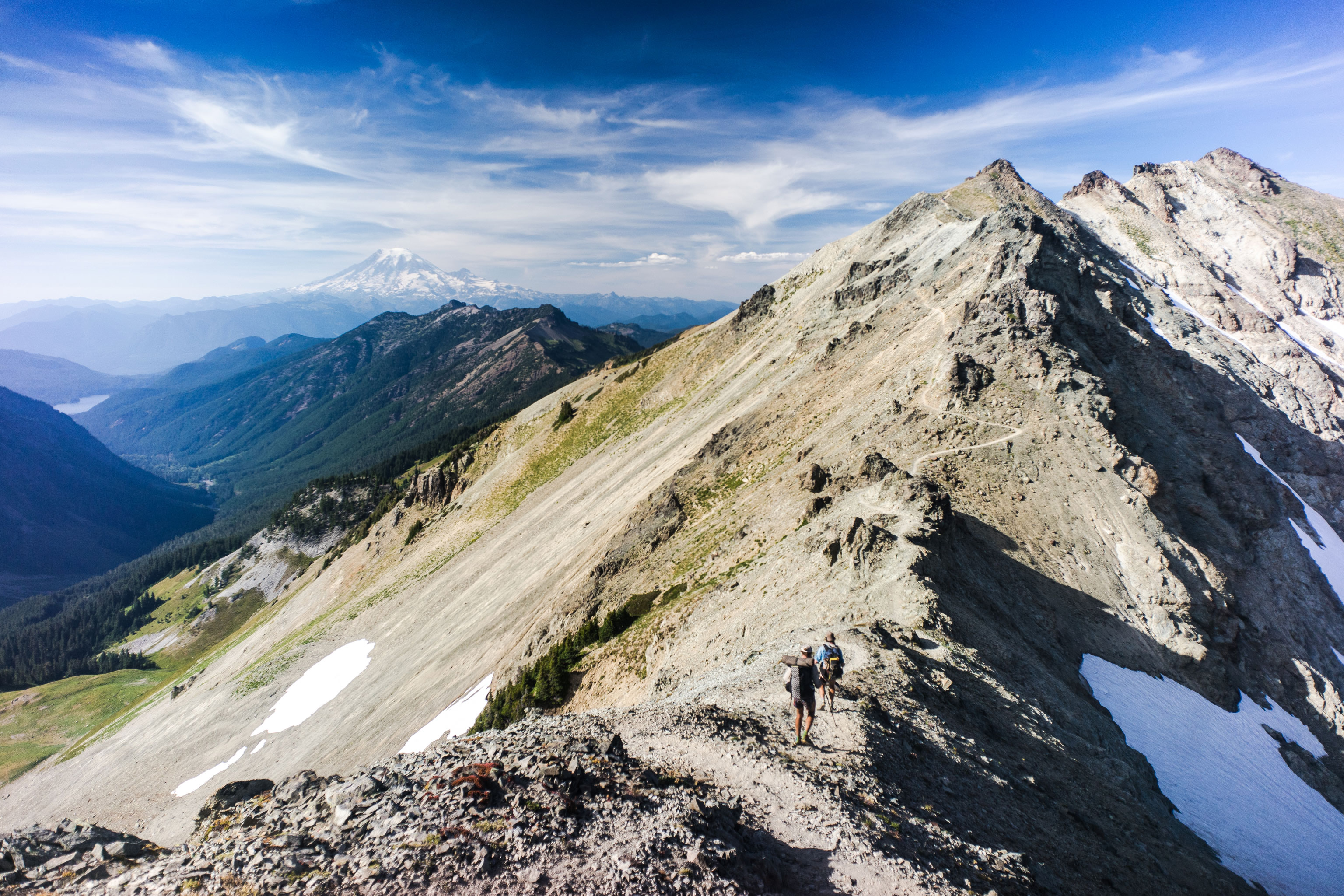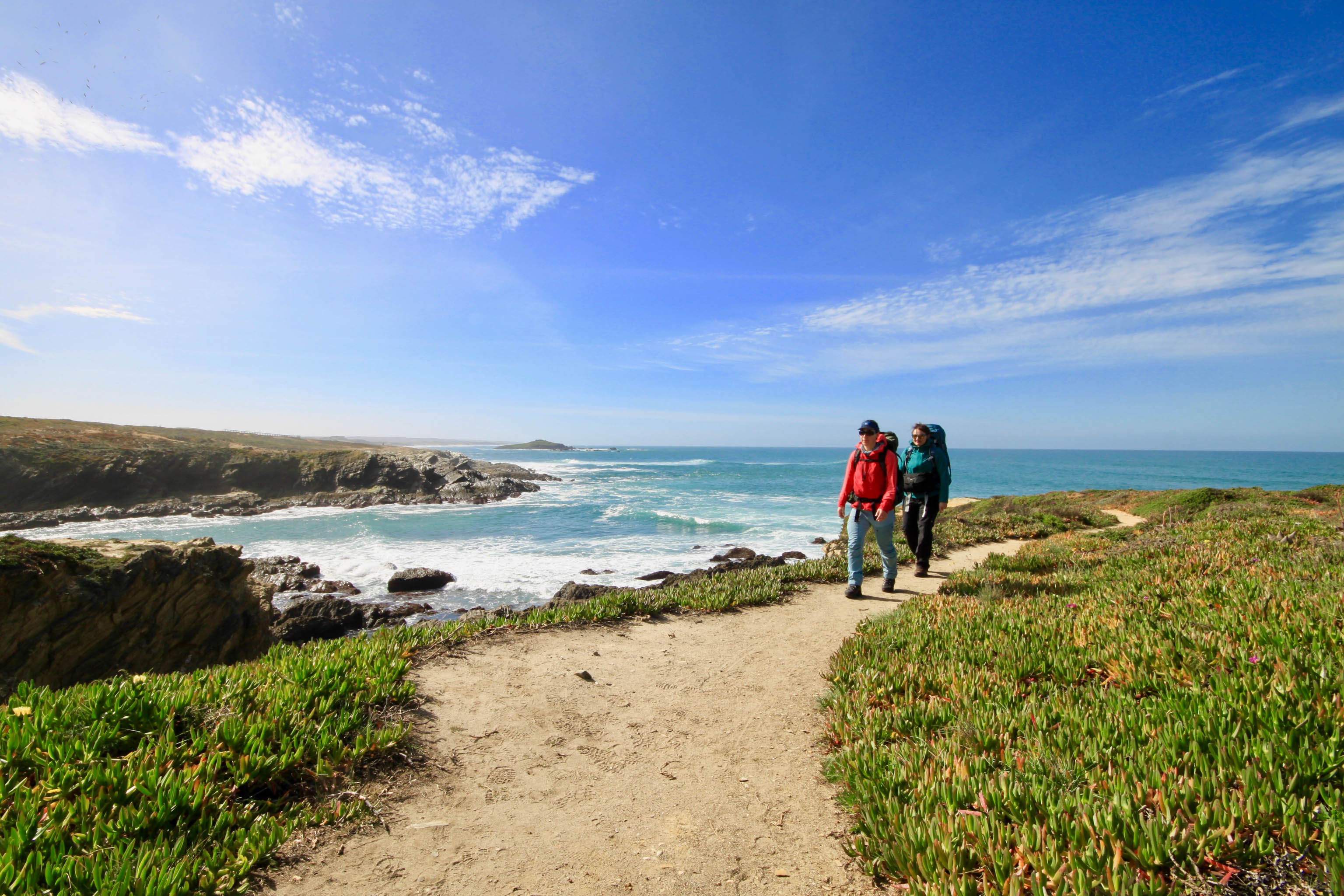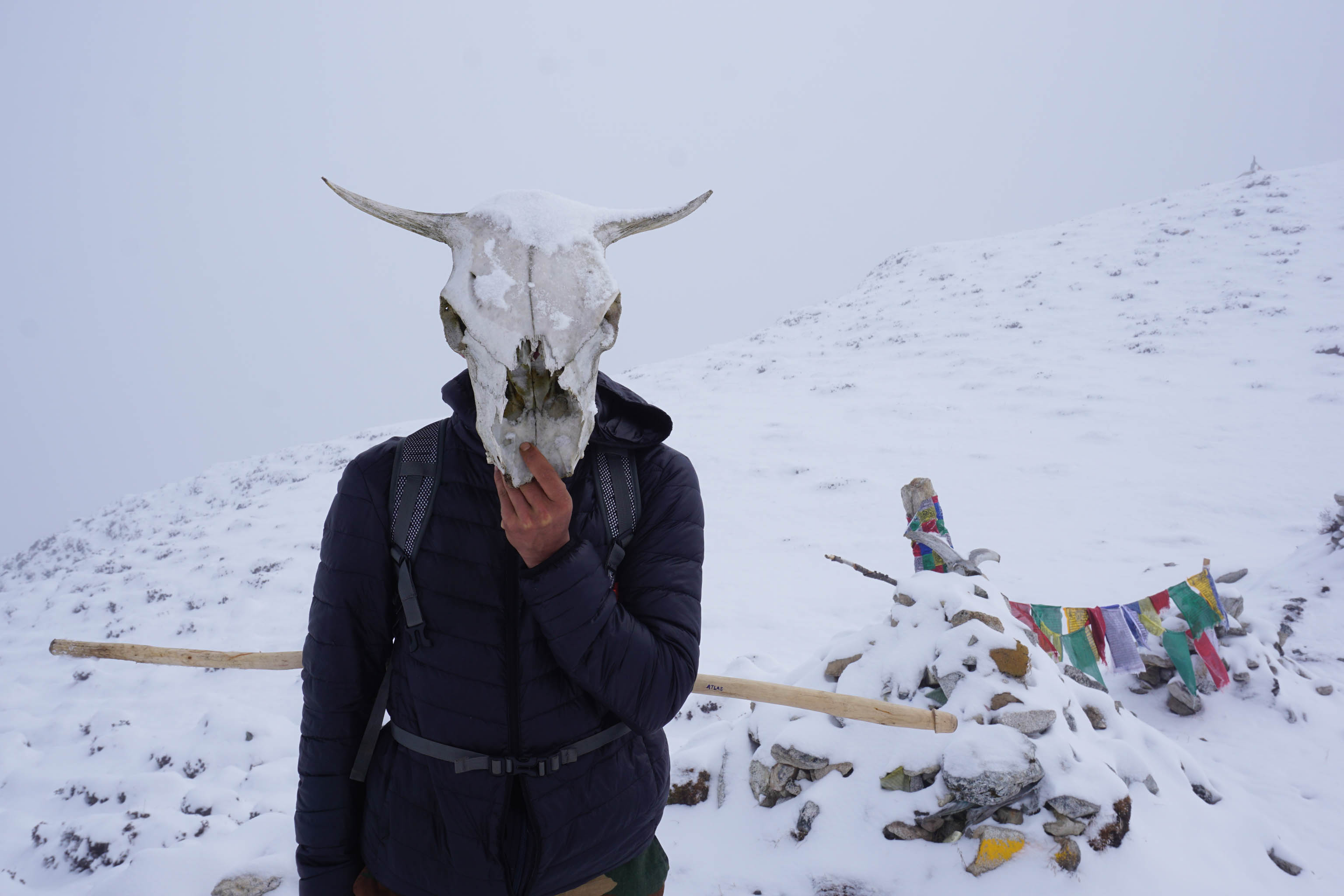Updated on
Mention travelling to Greenland and most people think of floating icebergs, wild polar bears, Inuits hunting seals and coastal towns overrun by cruise ship tourists. What most people are unaware of is that Greenland is paradise for genuine wilderness trekking. And this doesn’t just mean the Arctic Circle Trail either. The landscape between Kangerlussuaq and the inland ice sheet is not just home to musk oxen and reindeer, it is a unique Arctic wilderness. A Greenland travel report.
Four hours and 40 minutes. That’s all it takes to travel to a completely different world. From Copenhagen to Greenland. Contrasts don’t get any bigger. From trendy Danish metropolitan flair to remote Kangerlussuaq in the Arctic Circle. Such an amazing-sounding name for such a small, bleak settlement.
Our Trekking Route
Kangerlussuaq (Greenlandic for “Big Fjord”) is not much more than Greenland’s main airport, plus a few houses – make that former army barracks. The runway is large enough and the weather conditions are stable enough to support large, long-range airliners – often packed with cruise ship passengers. The settlement was built by the US army and was used as a military base in the Second World War. In 1992, it was sold back to Greenland for the symbolic price of 1 US$.
Hoping to sit in a café? Or wander down town to see the sights? Forget it! Kangerlussuaq has no sights, little charm and few roads that go anywhere. So, there is no escape, unless you leave on foot. And this is exactly what we are doing. Eleven days of Greenland hiking, with a big pack, off-trail through the wilderness and the Arctic summer.
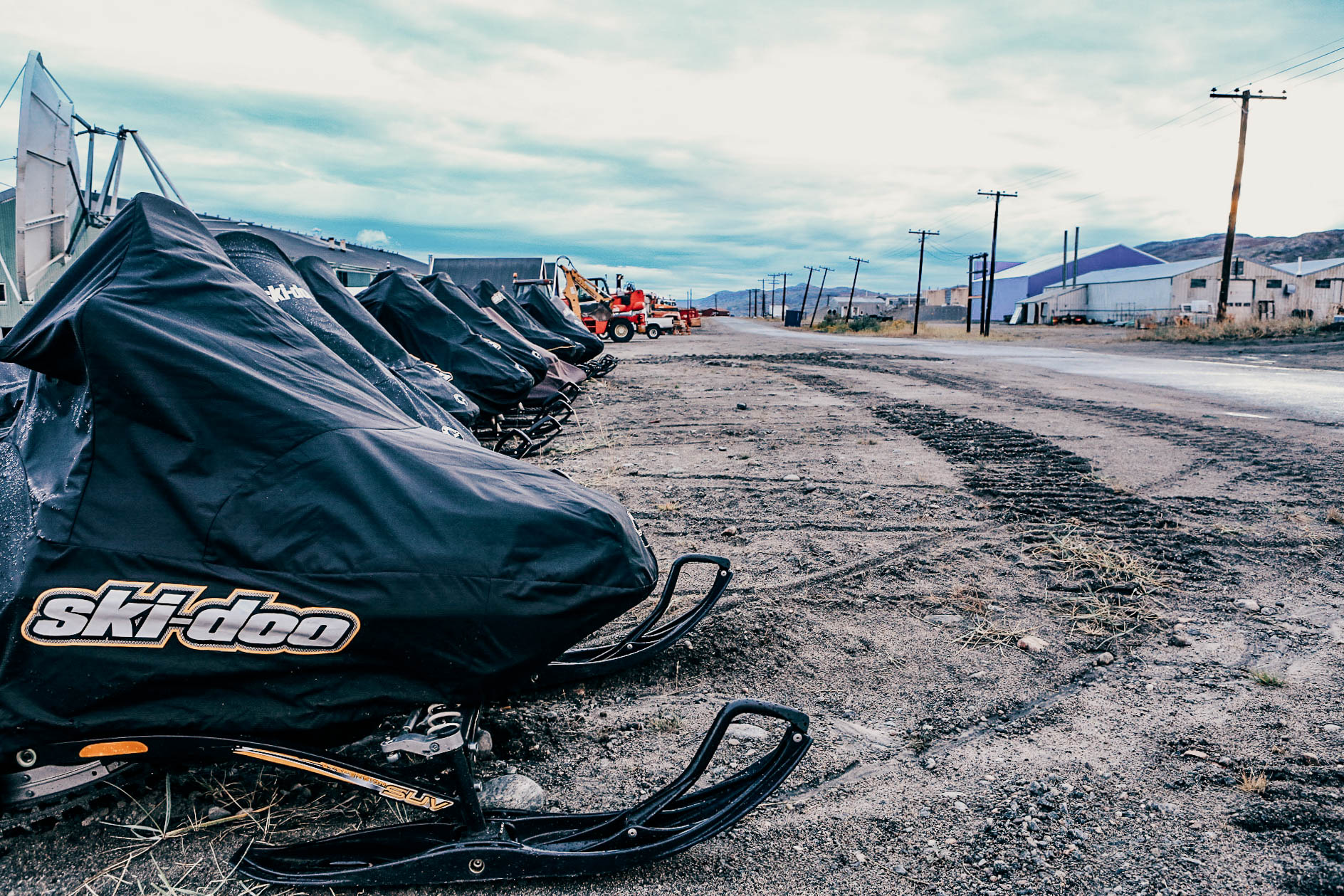
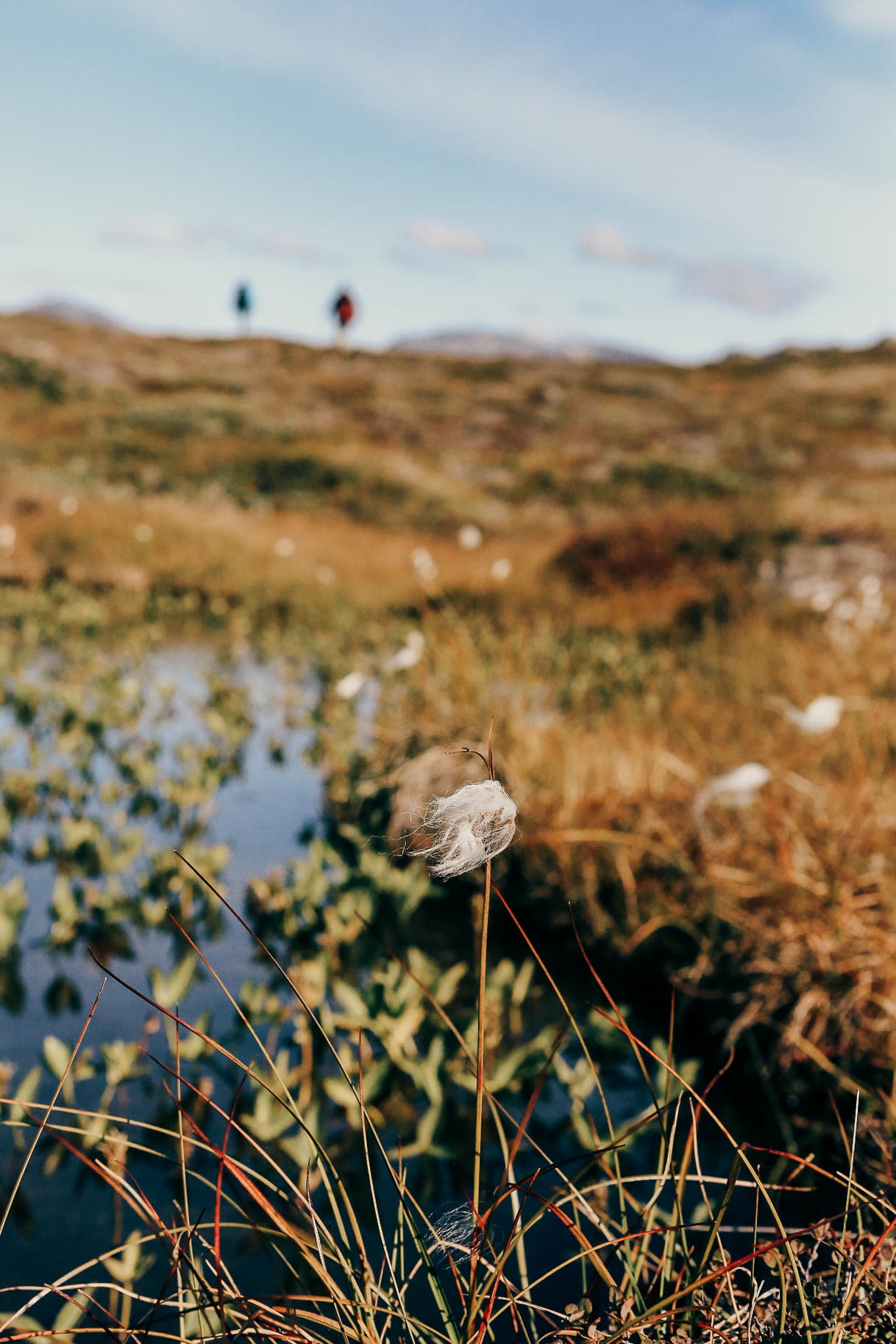
Heading for inland ice
Ice, ice, baby
The ice sheet covers around 80 per cent of Greenland, some 1.8 million square kilometres. After the Antarctic ice sheet, it is the world’s second largest permanent body of ice – though it’s shrinking – climate change in action. Its dimensions are hard to actually take in: From north to south, it stretches 2,500 kilometres and from east to west, 1,100 kilometres. On average, the ice is 1,500 metres thick. In places, it’s 3,000 metres thick. That makes some 2.67 million tonnes of ancient polar ice. The weight of it has shaped the land underneath it like a frying pan. If the entire ice sheet was to melt, world sea-levels would increase by around seven metres.
Next morning, 06:00. In the ‘Vandrehjem’, Kangerlussuaq’s youth hostel, we meet a man who knows the Greenland wilderness like the back of his hand. Jens-Pavia Brandt – who has 50 per cent Greenlandic, 50 per cent Danish origins – is going to guide us through no man’s land to the ice sheet. On the floor in front of him is a pile of bright blue Ikea bags, full of provisions. Bread, muesli, salami, cheese, rice and more besides.
“To be shared between the packs,” says Jerome Blösser. Jerome is a professional explorer and organises long-distance, unusual trekking tours around the world. In 2008, he crossed Greenland’s ice sheet from east to west in 30 days on skis with a pulk sledge. He and Jens-Pavia are guiding us. ‘Us’ describes a mixed bunch of adventure-ready outdoor enthusiasts from Germany. It’s the end of August, late for the Arctic Summer, but the best time to travel to Greenland for trekking. The temperatures at this time of the year mean that there are less mosquitoes, which makes hiking a lot more pleasant. We’re sleeping in tents and cooking on wood stoves and open fires.
We have a big distance to cover, but the challenge is more the complete lack of infrastructure. There are neither paths nor tracks, just the occasional trail made by animals. And despite the fact that Jens-Pavia has stashed some food supplies en route in advance, we still have to carry the bulk of it – on our backs. The region is known for its caribou, ptarmigans and other wildlife and in particular, the musk ox – there are over 10,000 of them.
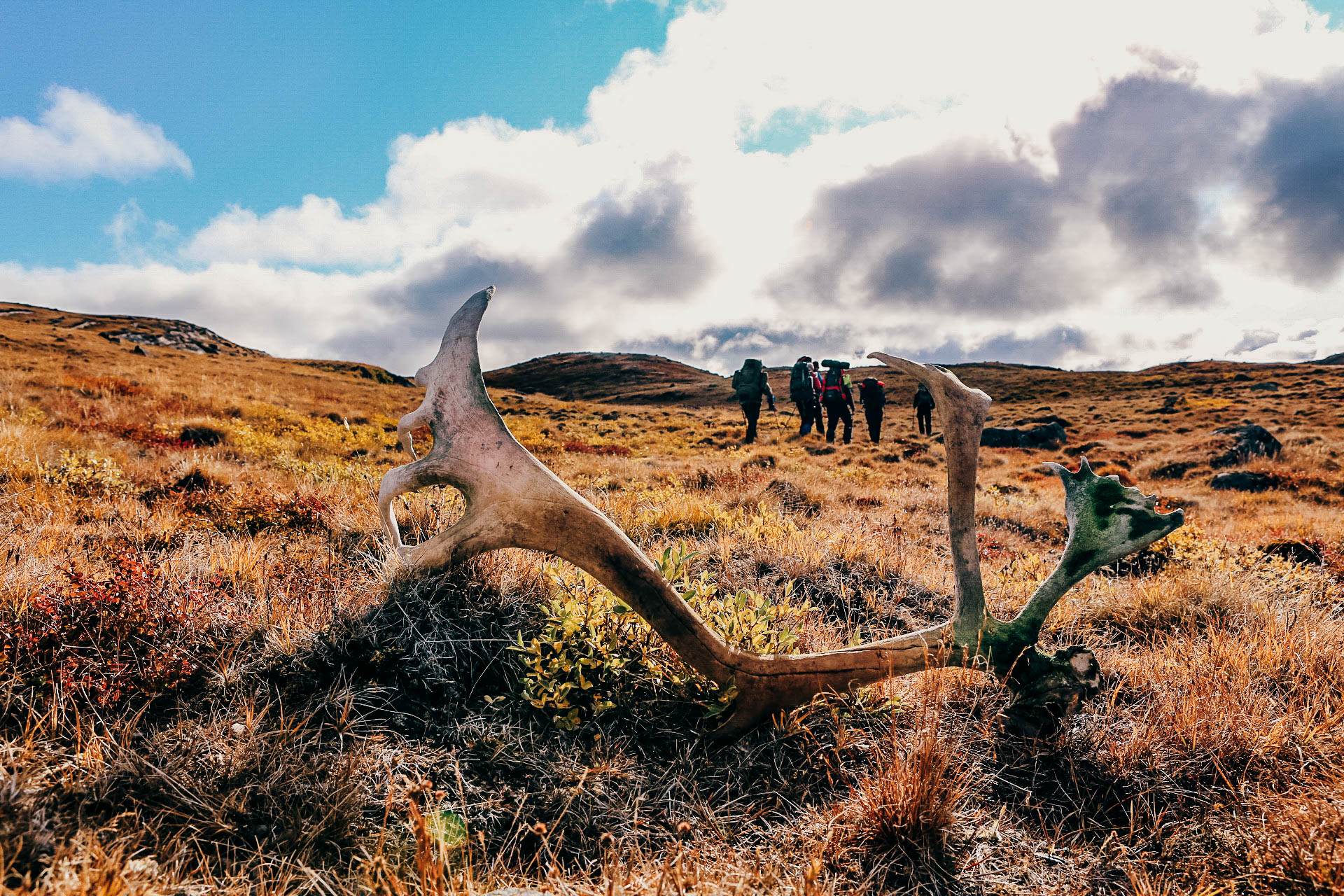
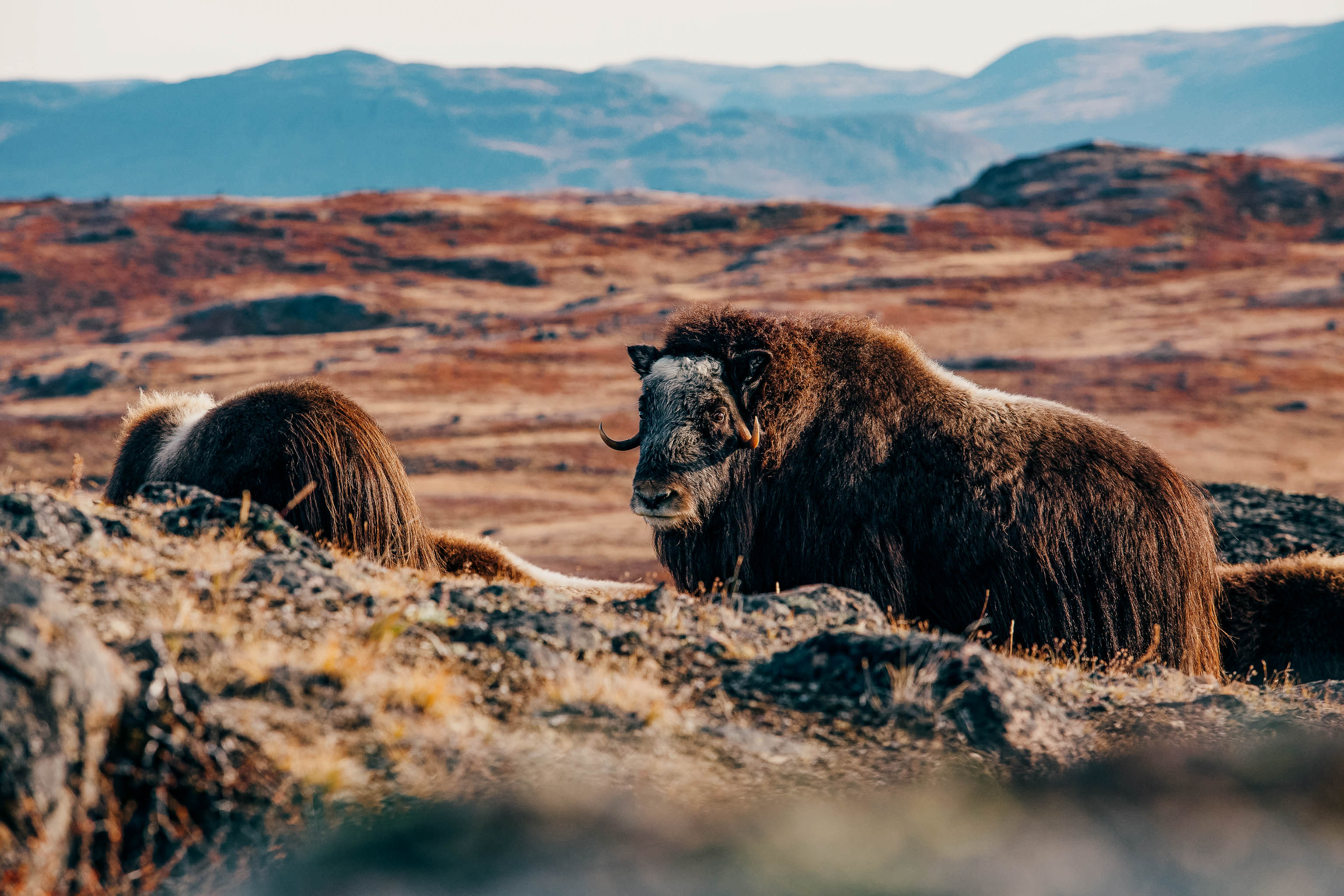
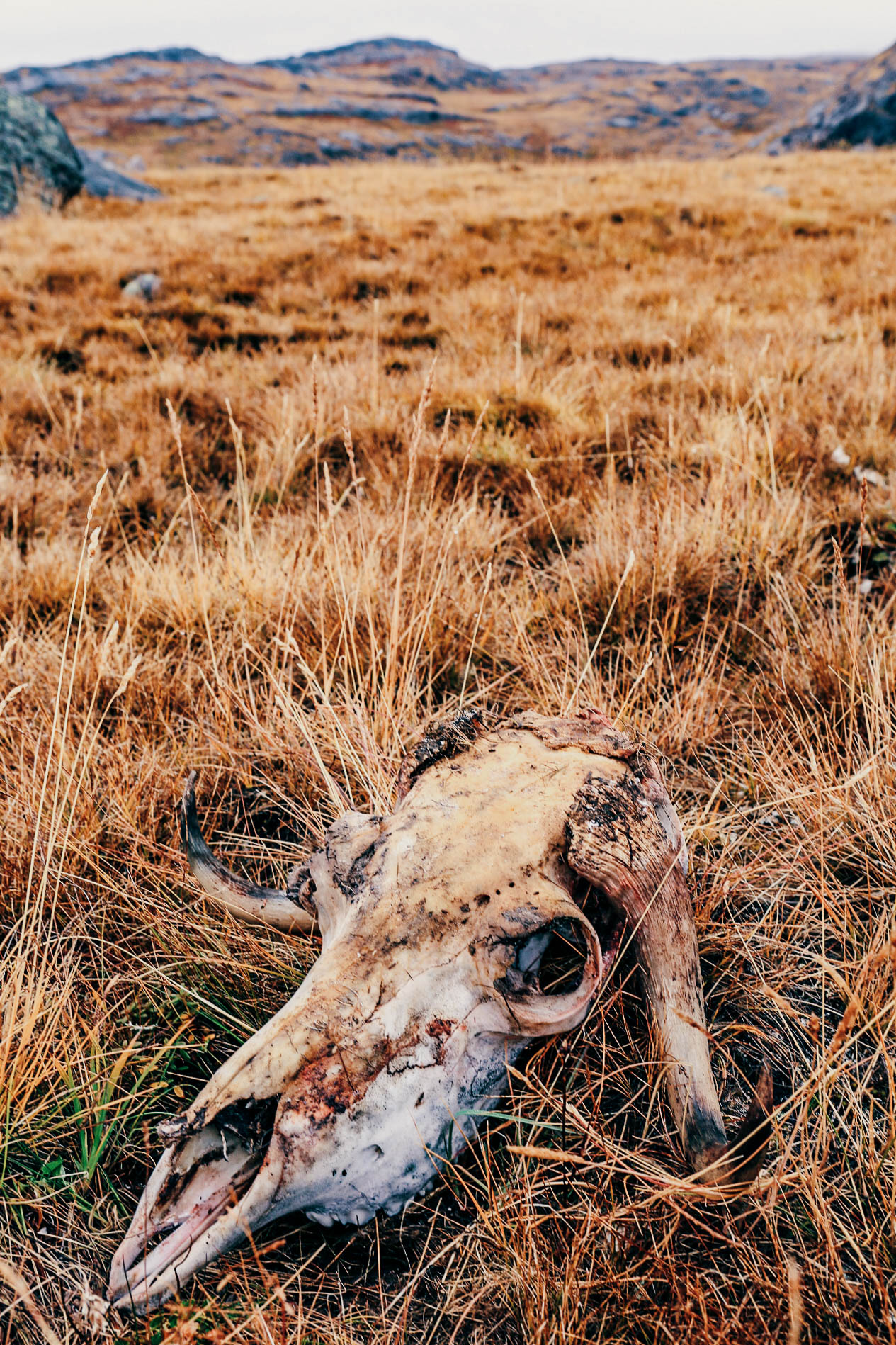
So finally, we set out. A lorry taxi brings us to the end of dusty trail. It takes a while to get used to the heavy packs over the initial kilometres, but the landscape soon distracts us. The onset of autumn has transformed the tundra vegetation into a magnificent blaze of colour. Yellows, reds, greens and browns in all different shades, interspersed by blue-green lakes.
The weather is also highly variable. Hiking in Greenland means you need to be ready for everything and anything. At times, the sun seems so hot that even just a functional T-shirt is too warm, while five minutes later a dark cloud passes over the sun, and the icy winds start up again, chilling you to the bone. It’s important not to take unnecessary risks as we’re already a few days’ hiking from Kangerlussuaq and returning would be complicated.
There is no ‘mountain rescue’ here as there is in the Alps, and the only means of emergency transport – the helicopter – is not always available. However, this is exactly what makes this trek into a real adventure.
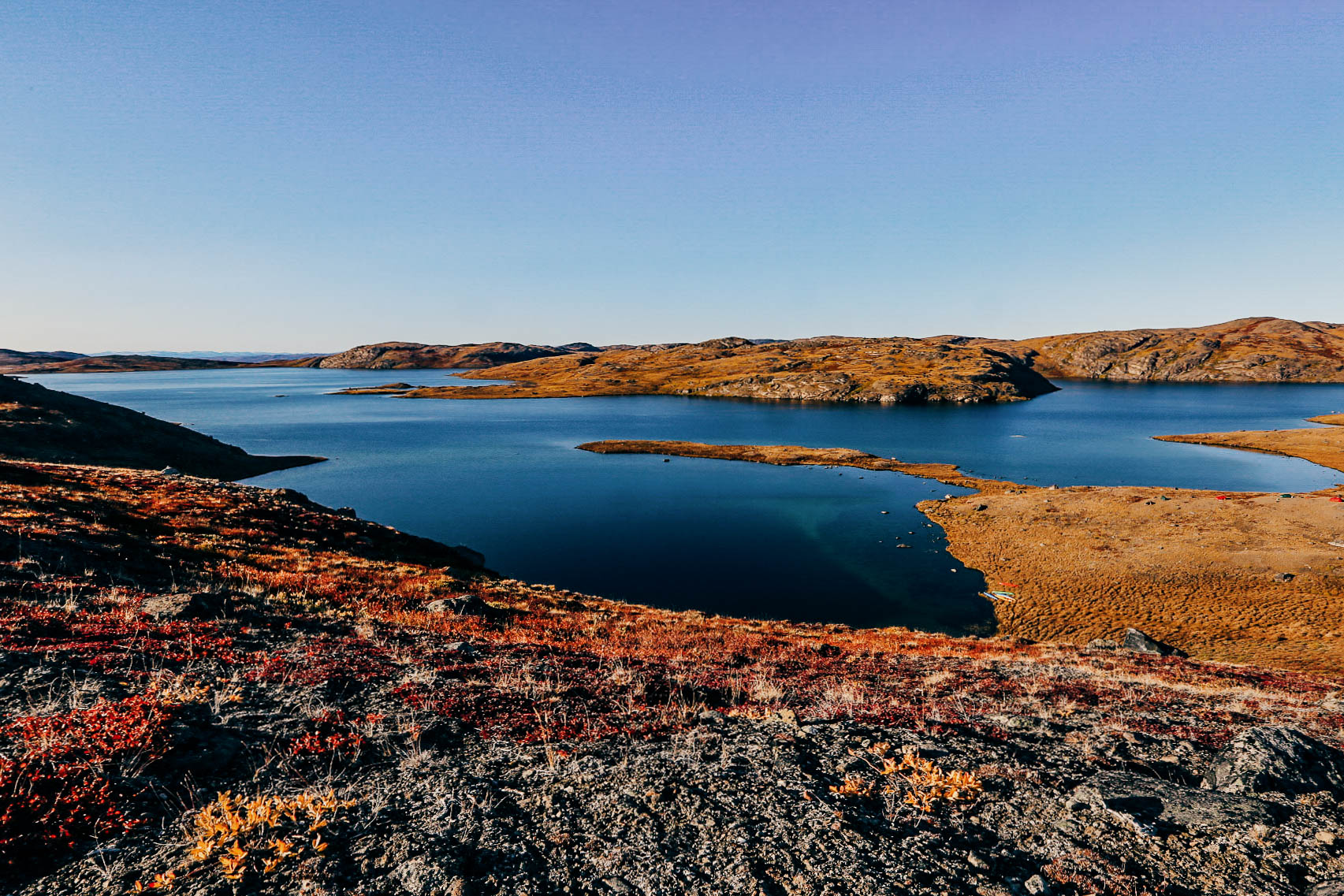
Musk marked trails
Qiviut – arctic gold
Everyone is talking about merino wool. However, in terms of heat retention, musk ox wool is far superior. In the Arctic areas of North America, Greenland and Scandinavia, musk oxen survive in temperatures of -50 degrees and extreme wind speeds. Their light undercoat has a much finer structure than their southern counterparts. In terms of warmth-to-weight ratio, fine fibres trap more heat and are more wind resistant. So, good for the shaggy ox then? Well yes, but it’s not all good news. Musk ox wool, or ‘Quiviut’ as the Inuits call it, is as soft as cashmere and eight times warmer than normal sheep wool. This means that it is sold as a luxury yarn and known as ‘Arctic gold’. The wool is combed from domestic musk ox once a year, in springtime. A ball of wool made with 80 metres of 100% musk ox hair weighs just 22 grams – and costs around 80 euros!
Jens-Pavia suddenly holds up a hand and points to a hollow. No more than 300 metres away, we see three musk oxen lying peacefully in the scrub. We’re downwind from them, which is lucky. Quietly we take off our large backpacks, and move stealthily towards them, cameras at the ready. Some 50 metres off, they spot us. After sniffing to identify us, they decide we are not of interest and disappear up the mountain. Their strong, distinctive, musky odour hangs in the air. You wouldn’t exactly call it a perfume – more a mix of sweaty, old T-shirt forgotten in the bottom of your pack, blended with a hint of train station lavatory.
They might not smell great, but they certainly look impressive. With their thick, heavy brow and long curved horns, you wouldn’t want to mess with them. By the way: the name is confusing, as these ‘oxen’ are not related to cows. Genetically speaking, the musk ox is actually more of a king-sized Arctic goat. The Inuit name for them is more appropriate: ‘Umimmaq’, meaning ‘the bearded one’. Their thick shaggy coat, which makes them look big and kind of prehistoric, also provides major protection from the cold and the wind (see info box ‘Qiviut – arctic gold’).
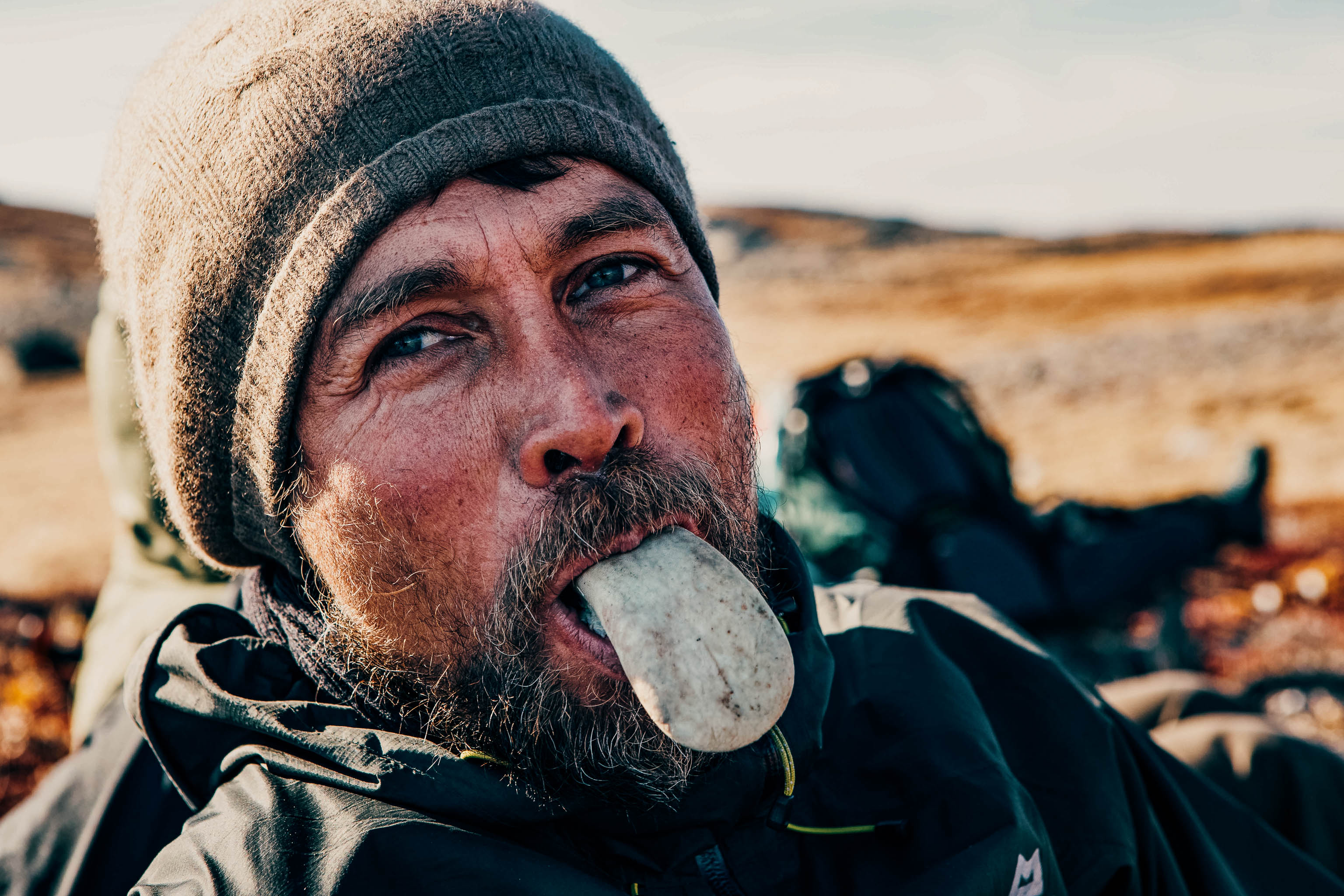
“Cooking with wood means that all we leave behind is ash.”
Jens-Pavia BrandtOur destination – Musk Ox Lake – led us to believe that we might see more of these lumbering giants. After six hours of constant uphill and downhill, we reach a U-shaped lake. On its northern shore, where Jens-Pavia had stored a supply depot, our transport to the other side was also waiting for us – seven kayaks. Our camp site is idyllic, a huge, totally flat meadow with a sandy beach in front of it. There must be room for at least 50 tents. We have just five, so there is no fighting over the best spots.
There is also dry wood – something of a rarity in the Arctic tundra – that Jens-Pavia has stored and dried in his depot. One hour later and we’re all happily eating caribou stew, rice and peanuts. “Why don’t you cook with gas or petrol – wouldn’t it be easier and less complicated?” His answer: “I would have to lug all the fuel out here,” and “What would I do with the rubbish? Cooking with wood means that all we leave behind is ash.” So, this is eco-friendly cooking.
Ice on the horizon
“Who of you has paddled a kayak before?” Three people cautiously raise a hand. “Don’t worry, no one has ever capsized on this lake.” It takes us a good hour to cross it. At first, we paddle over the crystal-clear water with full concentration, then gradually start to relax and gaze out at the surrounding mountains. Upon reaching the far shore, we pull the boats in and unload. One half of our group heads back in the canoes to fetch more wood and food, while the other half sets up camp. Camp routine is starting to get slicker: Pitching the tents, sorting out the sleeping bags etc., chopping firewood so that it’s ready to cook on, fetching water, preparing dinner and washing up afterwards.
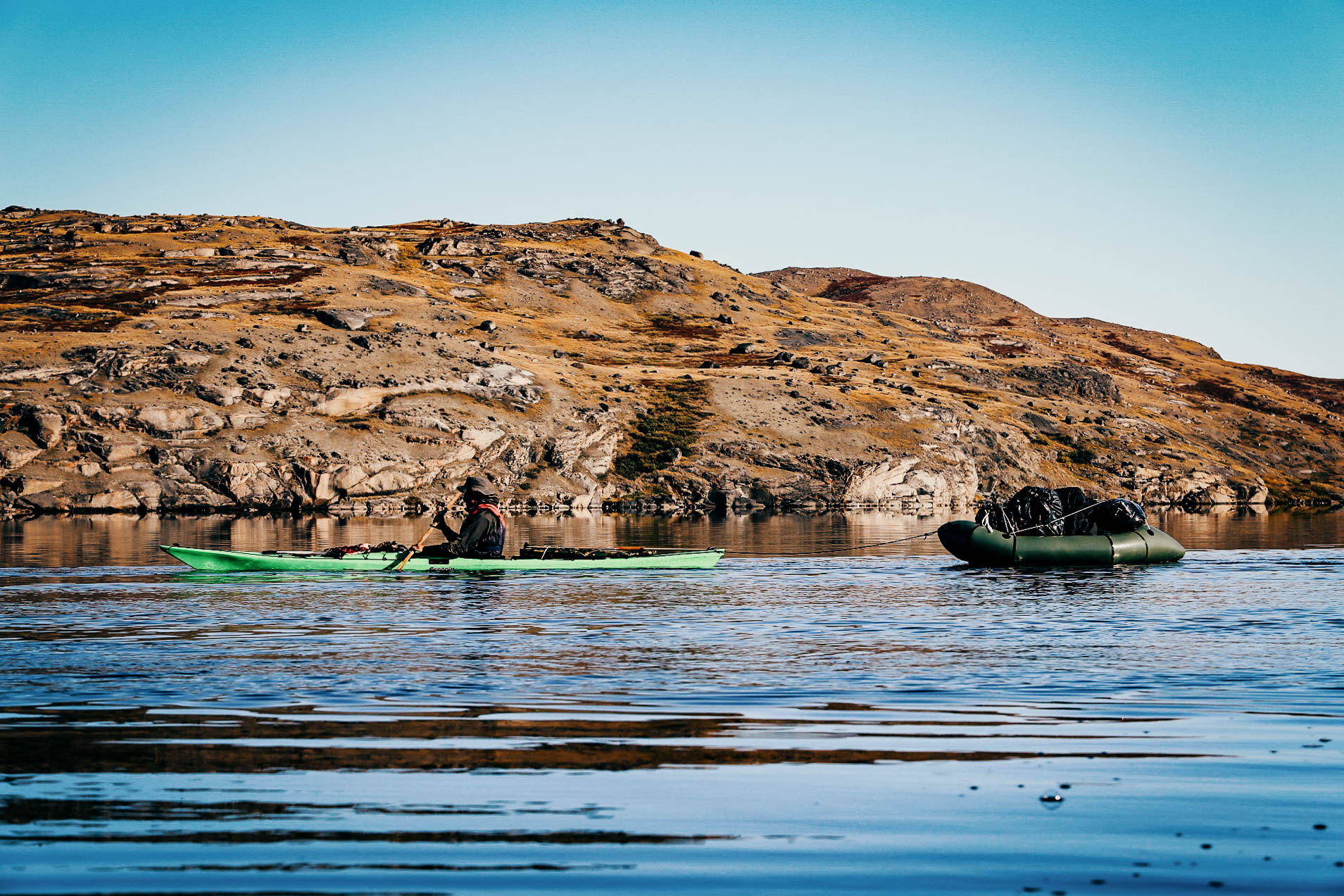
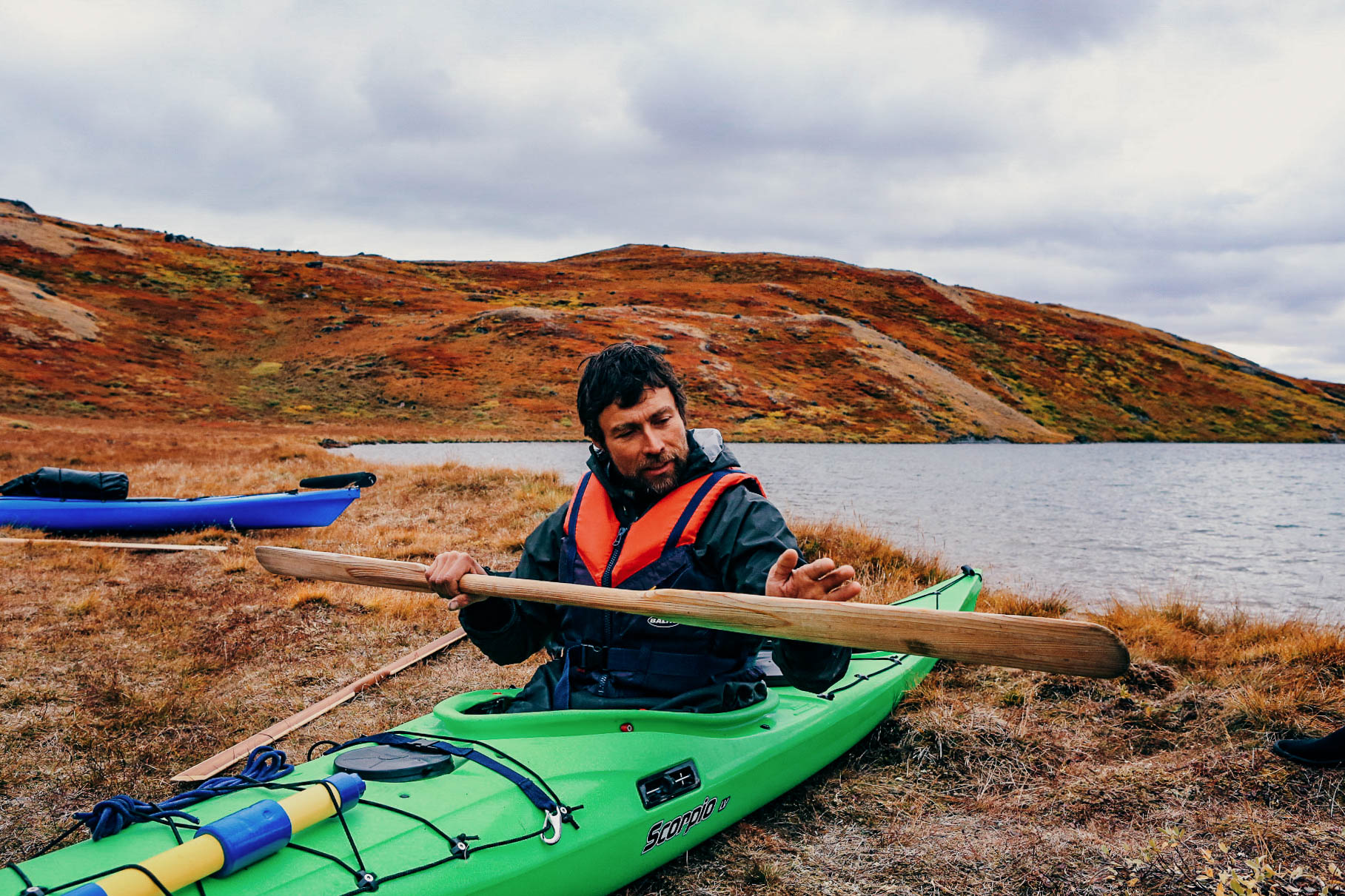
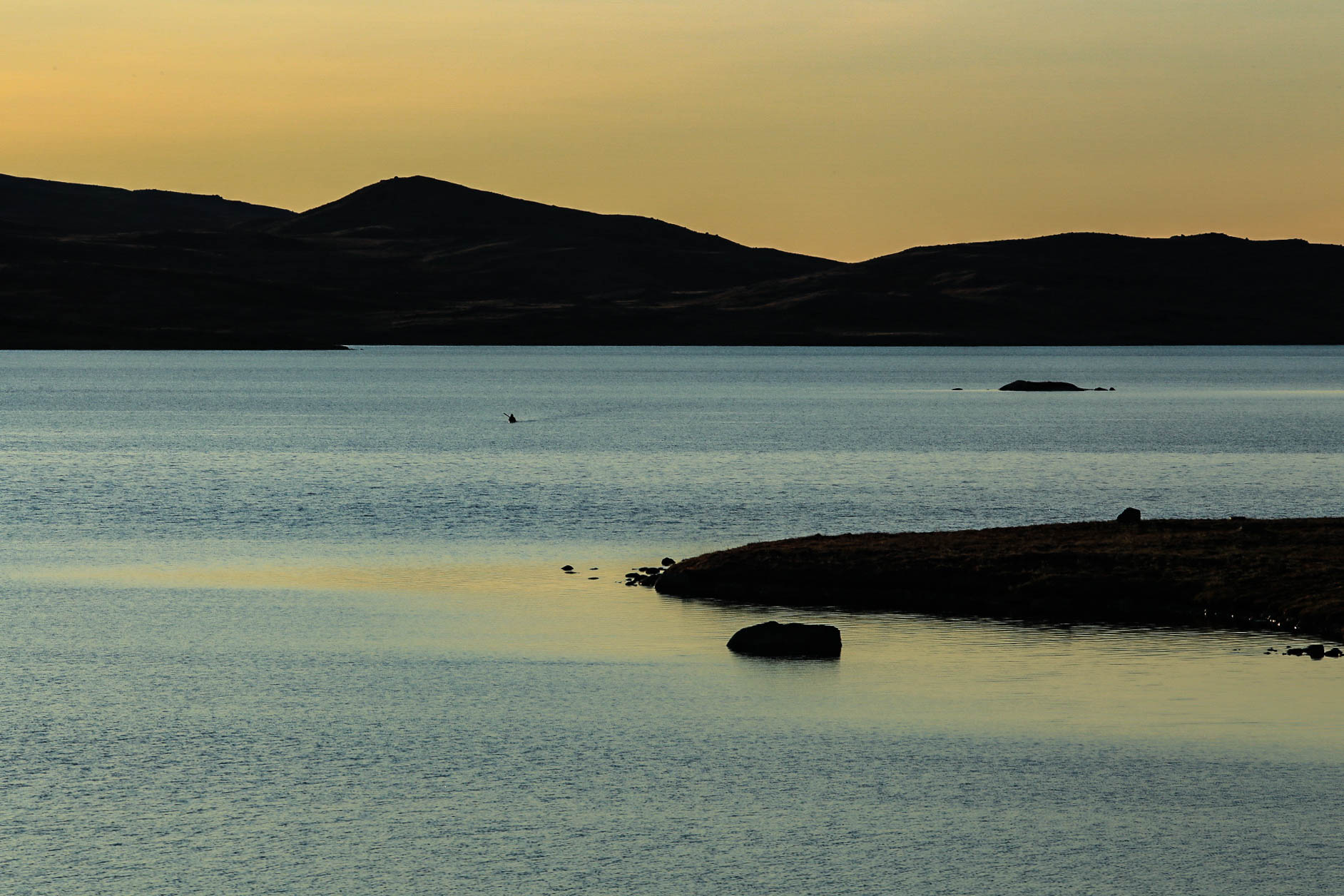
Next up, is our toughest day yet. We have several mountain ridges to cross. This means big height gain up and down over rough scree with a heavy pack – a real test for the muscles, tendons and powers of concentration. At the highest point, there is a reward awaiting us though: A view of our goal – the inland ice sheet, sparkling far off in the distance.
Summer conditions in this region are very stable, unlike directly on the coast – at least they are normally. However, the weather has a few special treats in store for us and we get a taste of everything Greenland has to offer on the weather front. Ideal conditions for testing functional clothing. However, the dramatic skies are a beauty to behold, the contrast between dark, racing clouds and bright rays of sunlight give this already wild landscape an aura of mystery. You could easily imagine yourself in J.R.R. Tolkien’s Lord of the Rings. If we were to be met over the next ridgeline by dwarfs with long beards, riding musk oxen, it would hardly seem out of place.
Instead, we see caribou, searching the scrub vegetation, looking for food. They flee as soon as they become aware of us, heads held high with their typical trotting gait. It’s a very dignified and composed form of retreat. We keep spotting Arctic hares – their white coats stand out from the dark undergrowth. In a few weeks, their coats will become more effective, as winter starts to transform the landscape.
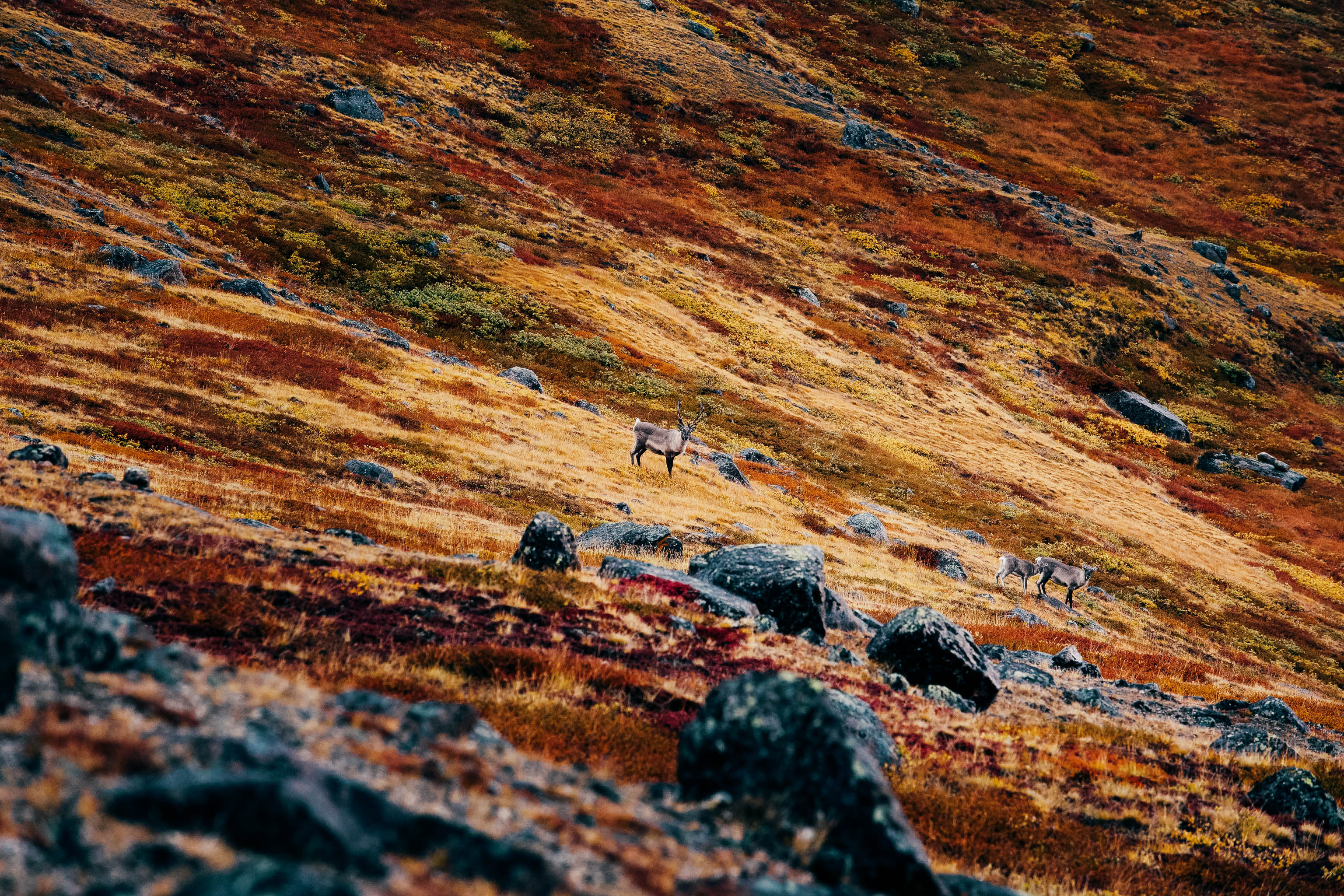
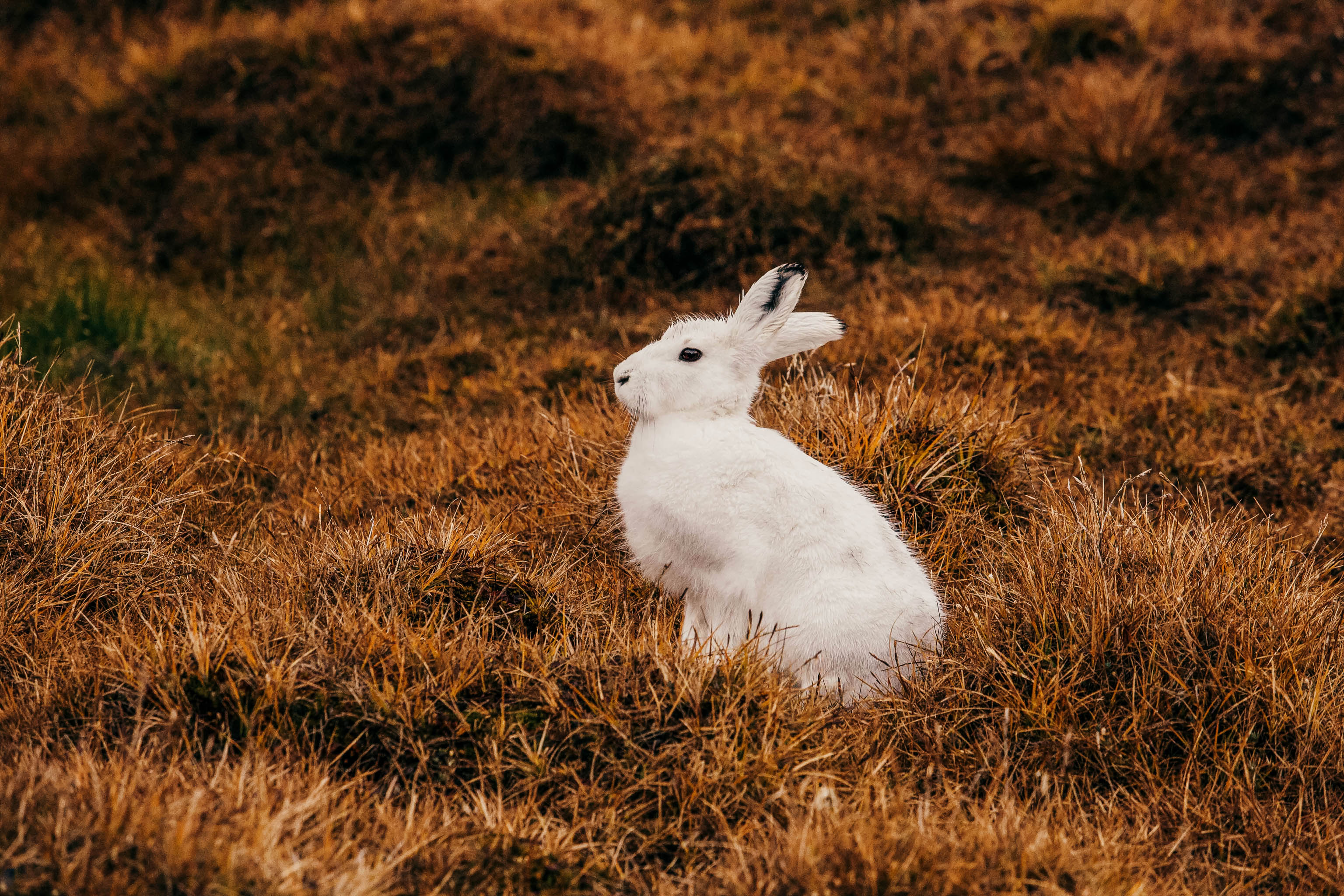
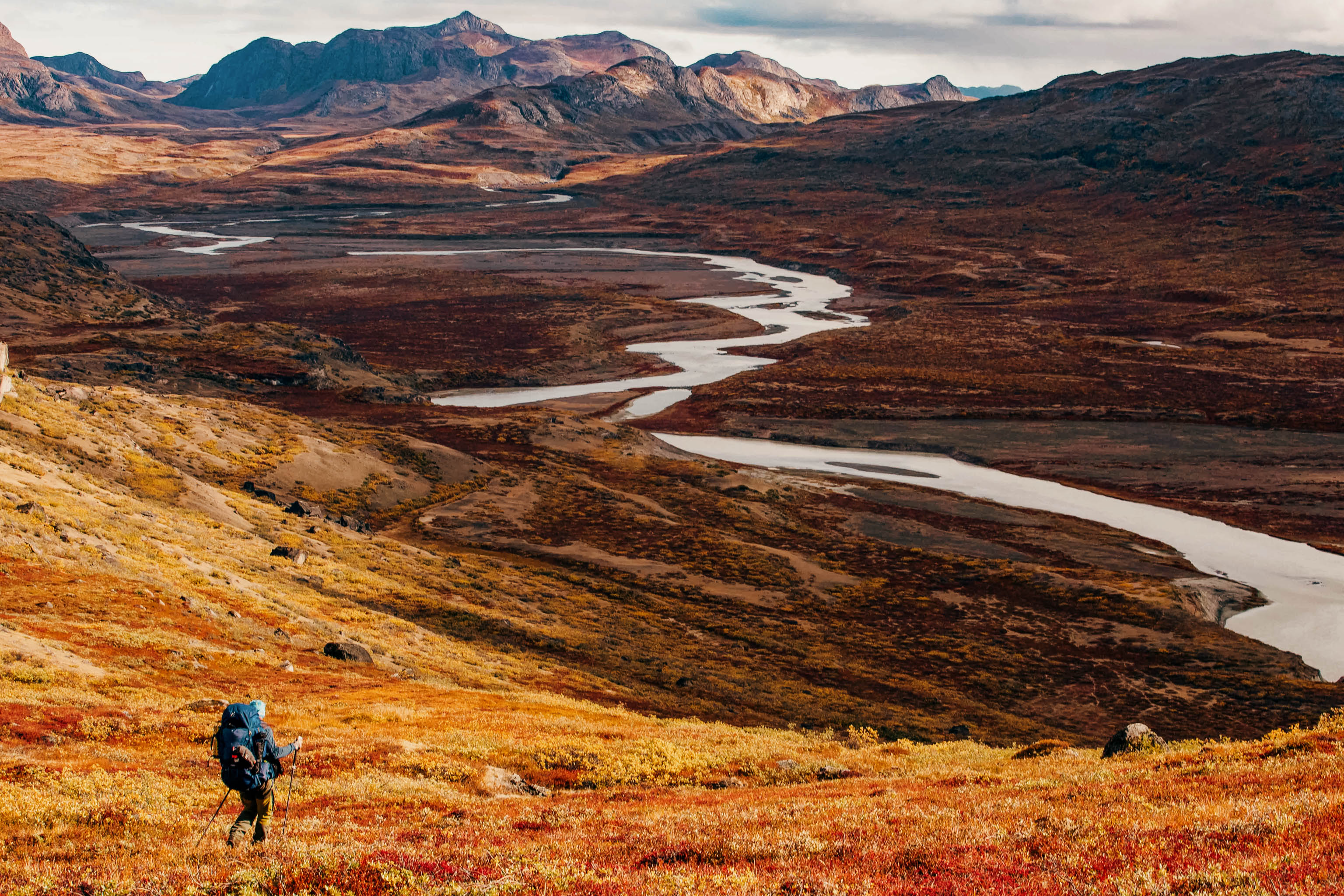
After the final climb, a wide valley is revealed on the other side. A nameless river snakes through it like a gigantic serpent. In the distance, a jagged chain of mountains towers on the horizon. The camp site that Jens-Pavia has chosen could hardly be more perfect. It’s next to a bend in the river, with small sections of even ground to pitch the tents and waist-high, bushes that block the wind. There is abundant firewood, drinking water and large, flat stones to cook on.
"The only snag is... glacial rivers are bloody cold. Nevertheless, putting aside concerns about any future child benefit, I take the plunge."
Moritz BecherAfter four days on the move, I’m grimy and sweaty, and the idea of having a quick wash is very tempting. The only snag is… glacial rivers are bloody cold. Nevertheless, putting aside concerns about any future child benefit, I take the plunge. The feeling afterwards is astonishing: sitting by the campfire, wrapped in warm clothes, fresh, clean and glowing – after what felt like acupuncture by a thousand ice-cold needles.
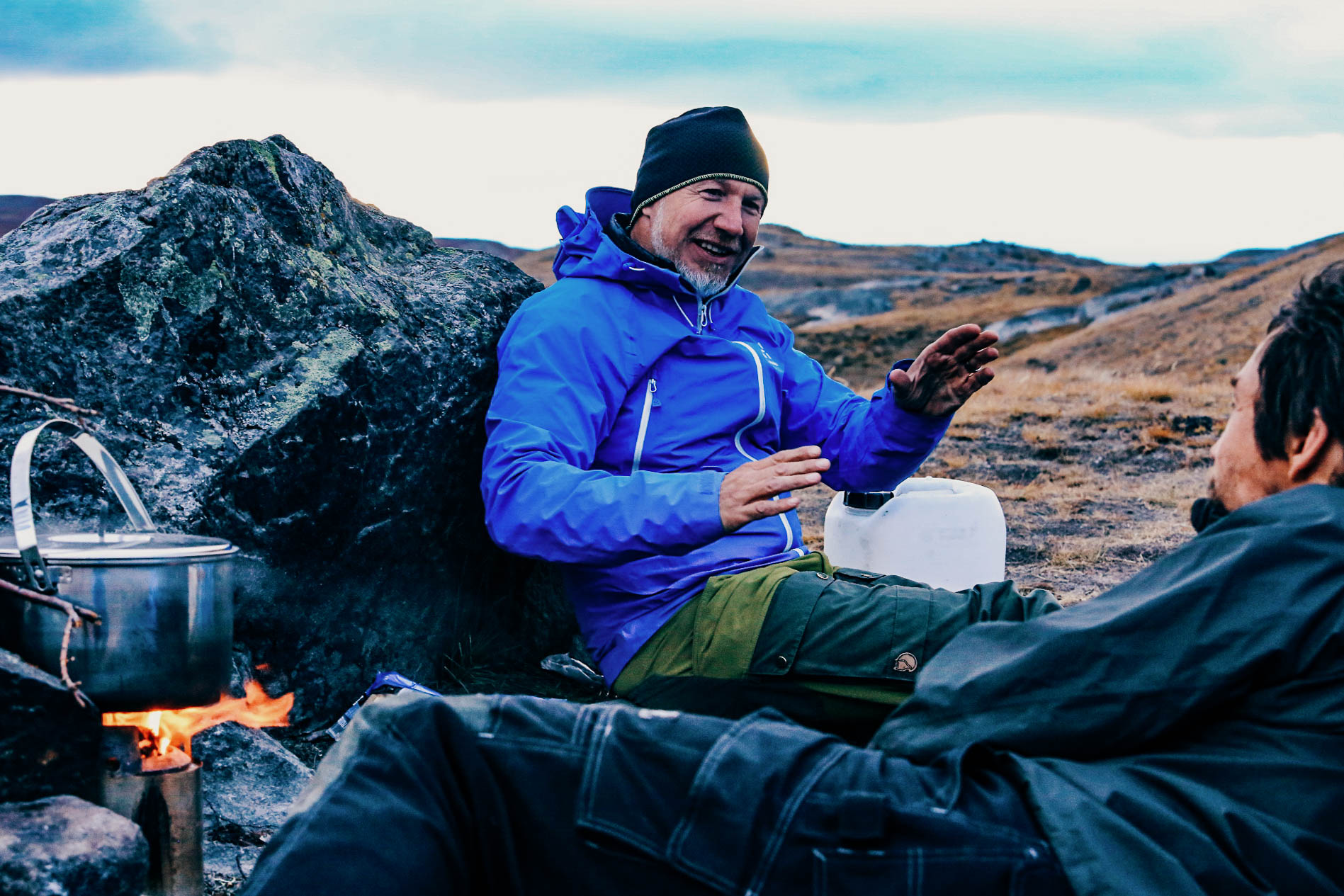
On the morning of day 5, we have bitter news: Matthias, one of our party who had a slight cold has developed full-blown bronchitis. Through the thin, nylon walls of his tent, we can clearly hear that he’s not doing well. This means we cannot continue. Time for a team talk. We’re already slightly behind schedule due to the bad weather. If we wait a day, then we will have no chance of reaching the inland ice. Should we split the group? Abandon completely? Or are there other alternatives? “I’m really sorry, but the risks out here are too great – even with a seemingly straightforward illness. Unfortunately, it’s not an option to split up the group.” It’s Jerome’s decision. After all he’s the one with overall responsibility.
Plan B
We agree to head back together, after a few days for Matthias to recover. Disappointment, understanding, sadness, low spirits – everyone reacts to the news in their own way. However, Jerome is not finished yet: “If we head back, we can still trek to the inland ice sheet, by getting a lift from Kangerlussuaq out to ‘Point 660’. We could camp out for two nights and hike to the ice.” We think it over, and are quick to all agree.
We use the extra rest days to explore the area, to enjoy the late summer Arctic weather, to track and watch wildlife, to photograph the amazingly beautiful landscape – or simply to hang out and have time to think and enjoy the lack of a mobile phone network. To lean back and rest against a rock, knowing that in all likelihood, you are the first person to ever sit here. This is all part of the Greenland trekking experience. Two days later – Matthias has recovered somewhat – we turn and head back.
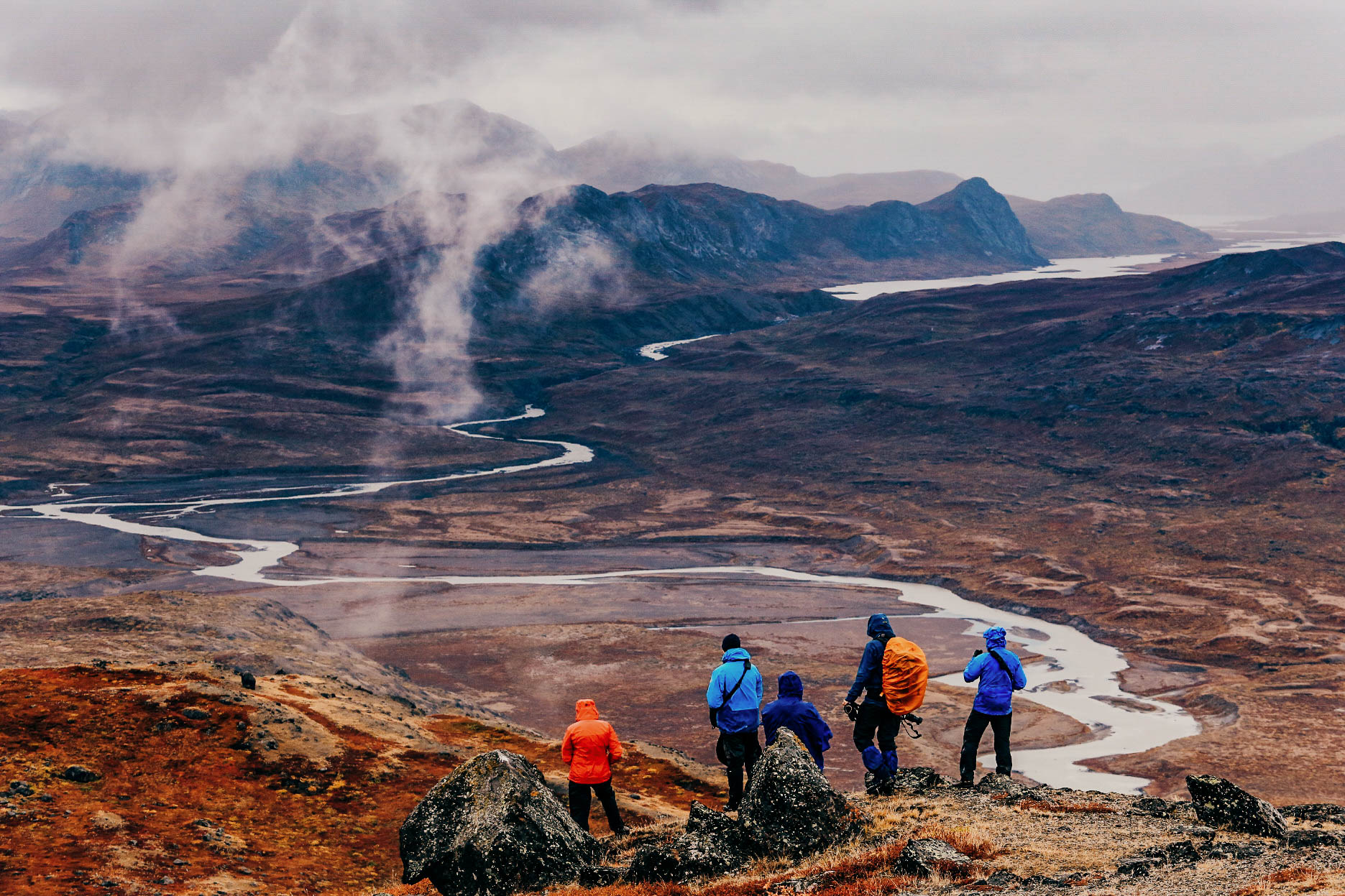
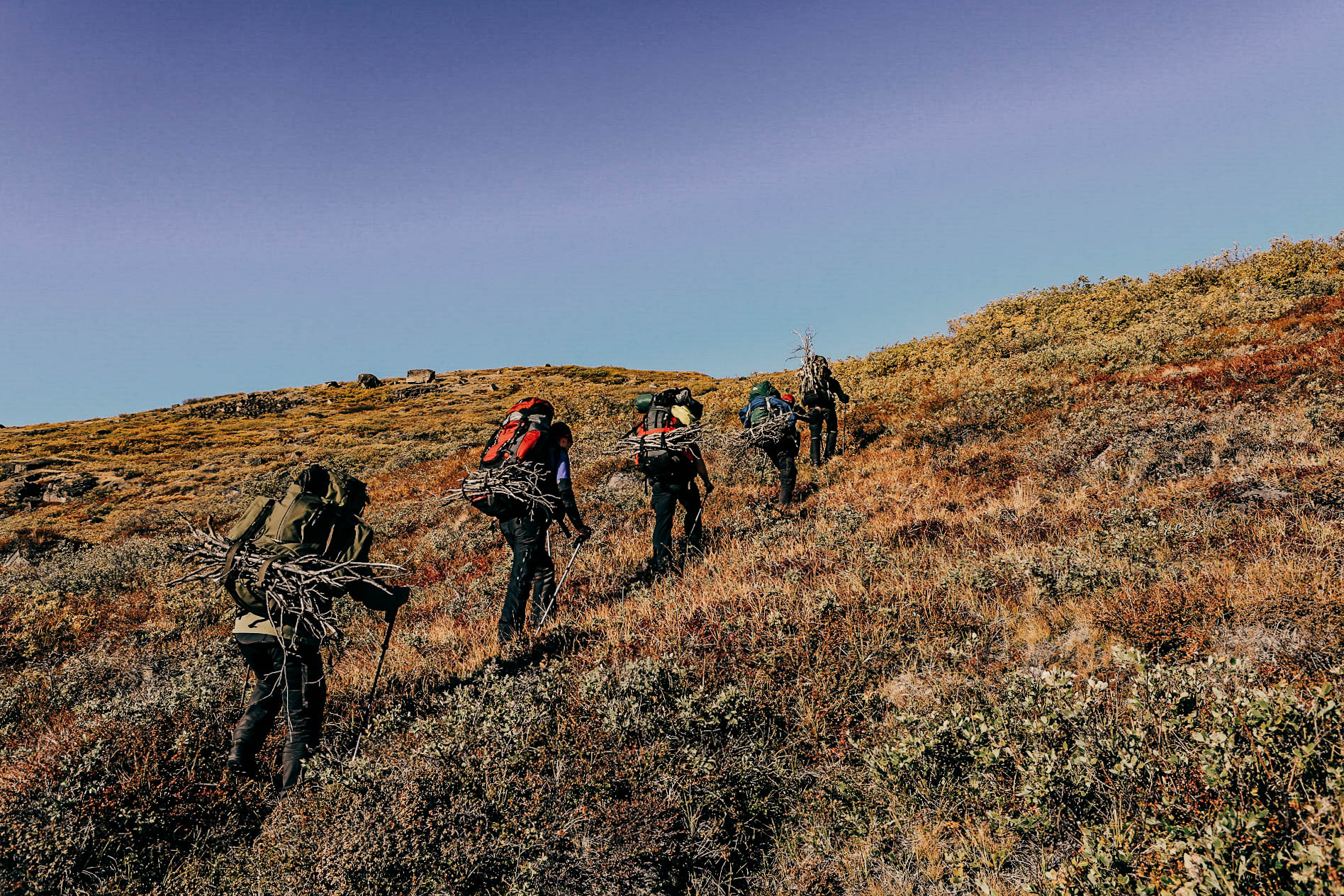
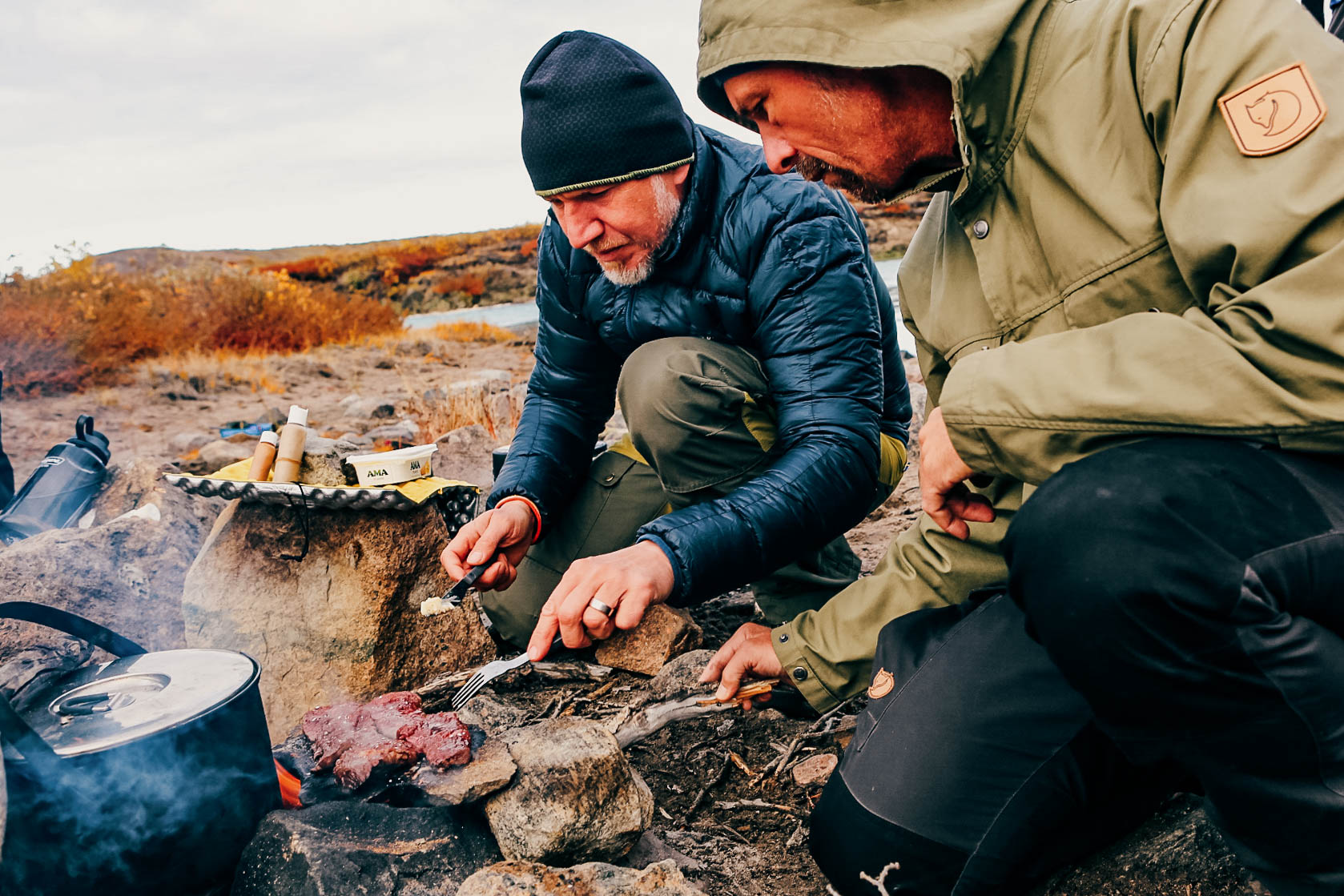
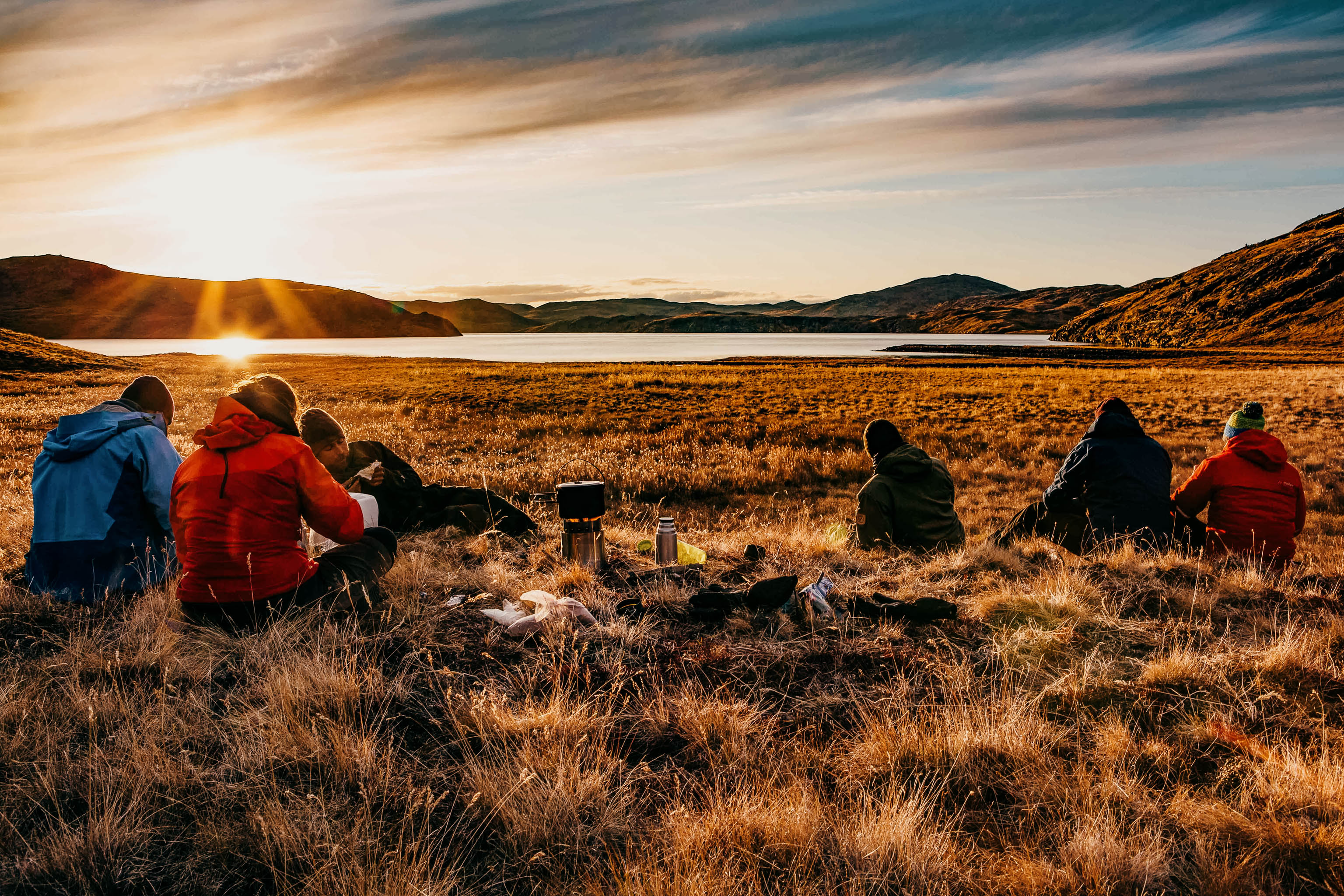
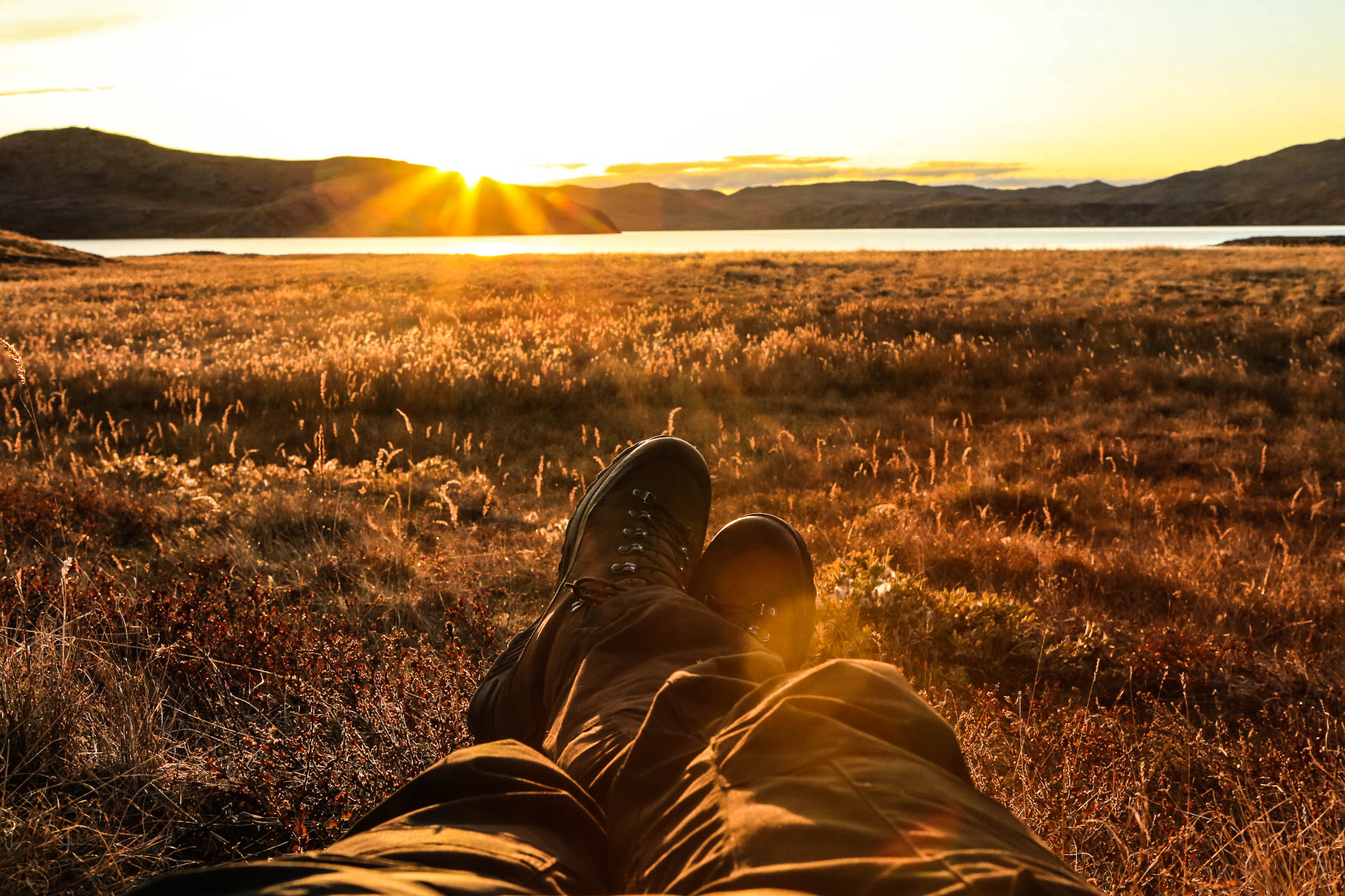
Endless ice
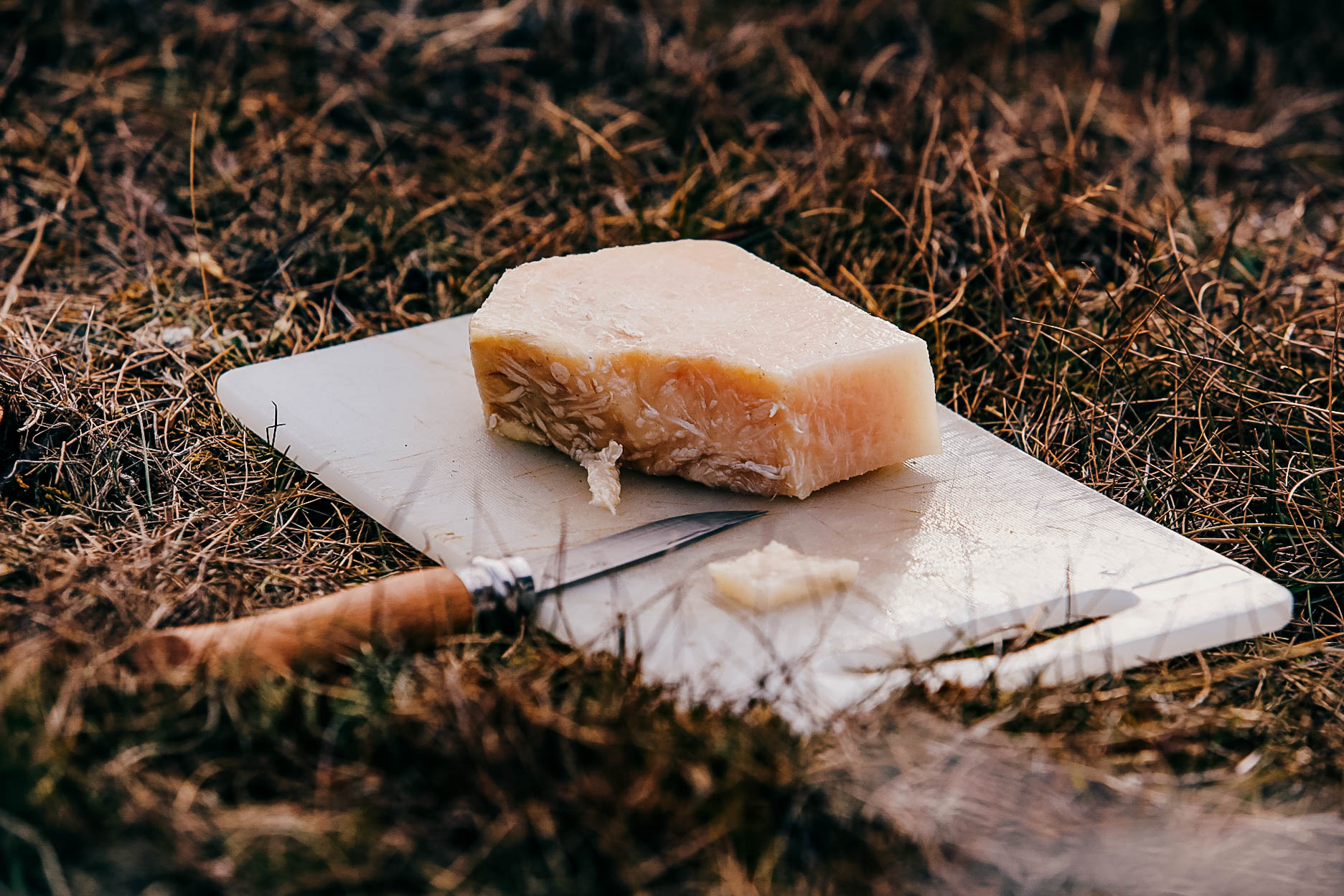
Inuit snacks
We might get strange looks from some of the Greenland locals when we get out our muesli bars or beef jerky, but this cuts both ways. When the Inuits pack out their trekking snacks, it’s enough to raise your eyebrows, and even turn your stomach. See, for example, our Greenland travel guide Jens-Pavia’s three-course menu: Starter: Dried fish (consistency: imagine chewing old towels, taste: the longer you chew it, the fishier it gets…). First course: Blubber – Pure seal or whale fat (consistency: frozen jelly babies, taste: fishy & fatty). Main course: Musk ox or caribou steak, boiled for 30 minutes in salt water (consistency: tender, literally melts in your mouth, taste: strong, appetizing and meaty).
After eight days in the Greenland wilderness, we reach the rough gravel road, where two taxis come to collect us and drop us back at the ‘Vandrehjem’ in Kangerlussuaq. The showers in the flat, dark building work overtime. In the shared kitchen, we meet another group of trekkers. They’re leaving the next morning on a longer project: Kangerlussuaq is also the starting point for the Arctic Circle Trail, a 170-kilometre long-distance trekking trail to Sisimiut, Greenland’s second largest town that lies directly on the Davis Strait, a northern arm of the Atlantic.
A day later, we jump into a three-axle monster. The all-wheel-drive truck eats up the fearsome gravel trail that leads to Point 660 at the edge of the Greenland ice sheet. Around the turn of the century, Volkswagen built a track here that leads to a secret test area on the inland ice. It’s 35 kilometres long – this makes it the longest road on the whole of Greenland. Suddenly the driver brakes to a halt. We jump out, grab the packs and head off into the wilderness to find a worthy final spot to pitch the tents.
The sublime blaze of colour that Greenland’s short but intense autumn offers does not last long – and we’re lucky enough to have timed it just right. Twenty hours and a tent night under the stars later, after half a day’s hiking through magnificent landscape made up of rolling hills, treeless tundra, rivers and lakes, we find ourselves standing on the world’s second-largest ice sheet. Here, at the edge of this polar desert, there are huge, surreal and bizarrely-shaped blocks of ice, interspersed by frozen streams. Underfoot, ice crystals tinkle, as if we are walking on broken glass. As far as the eye can see, everything is white: pure, white wilderness. “It’s 600 kilometres from here to Isortoq on the east coast,” says Jerome, obviously thinking of his trek across the inland ice sheet.
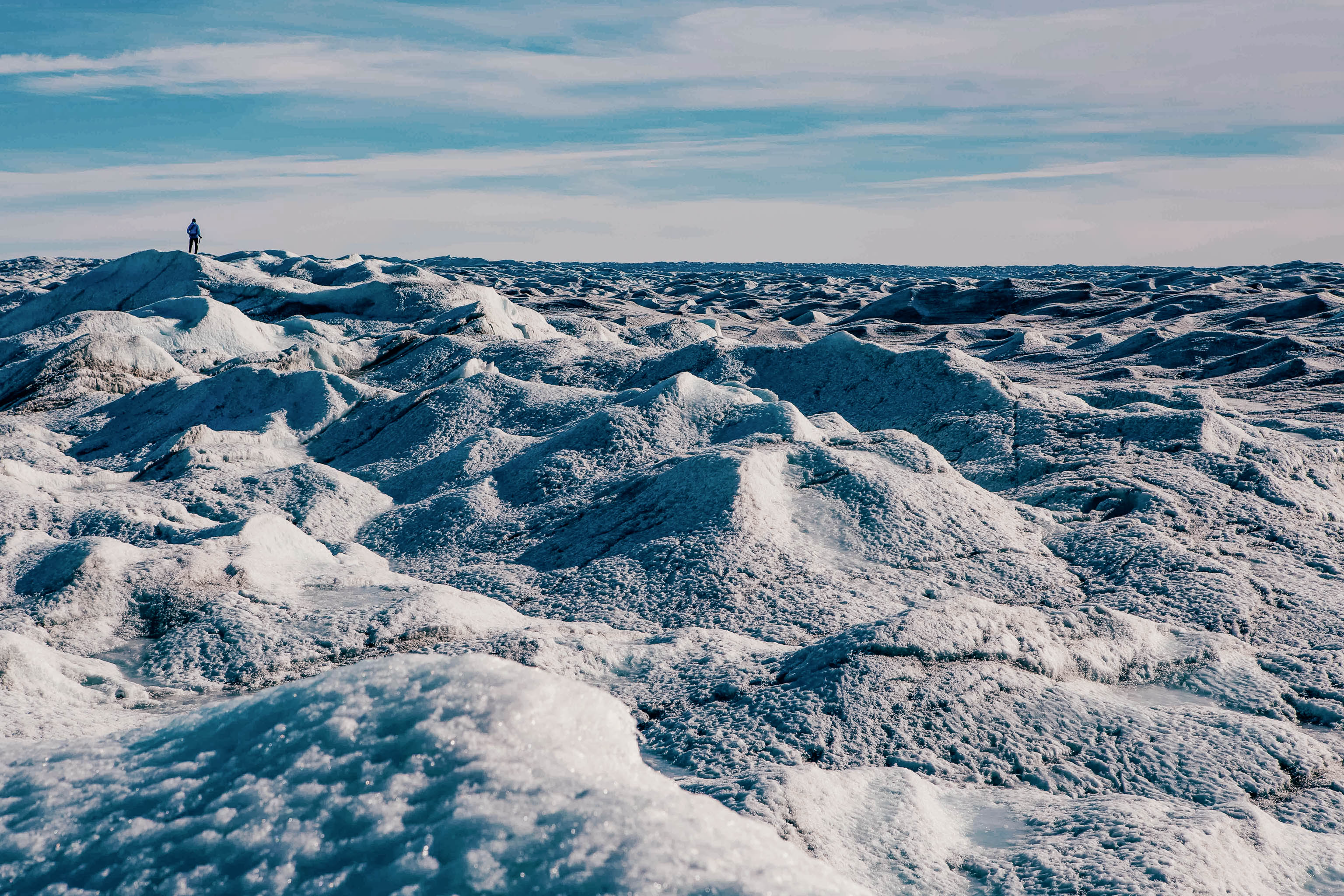
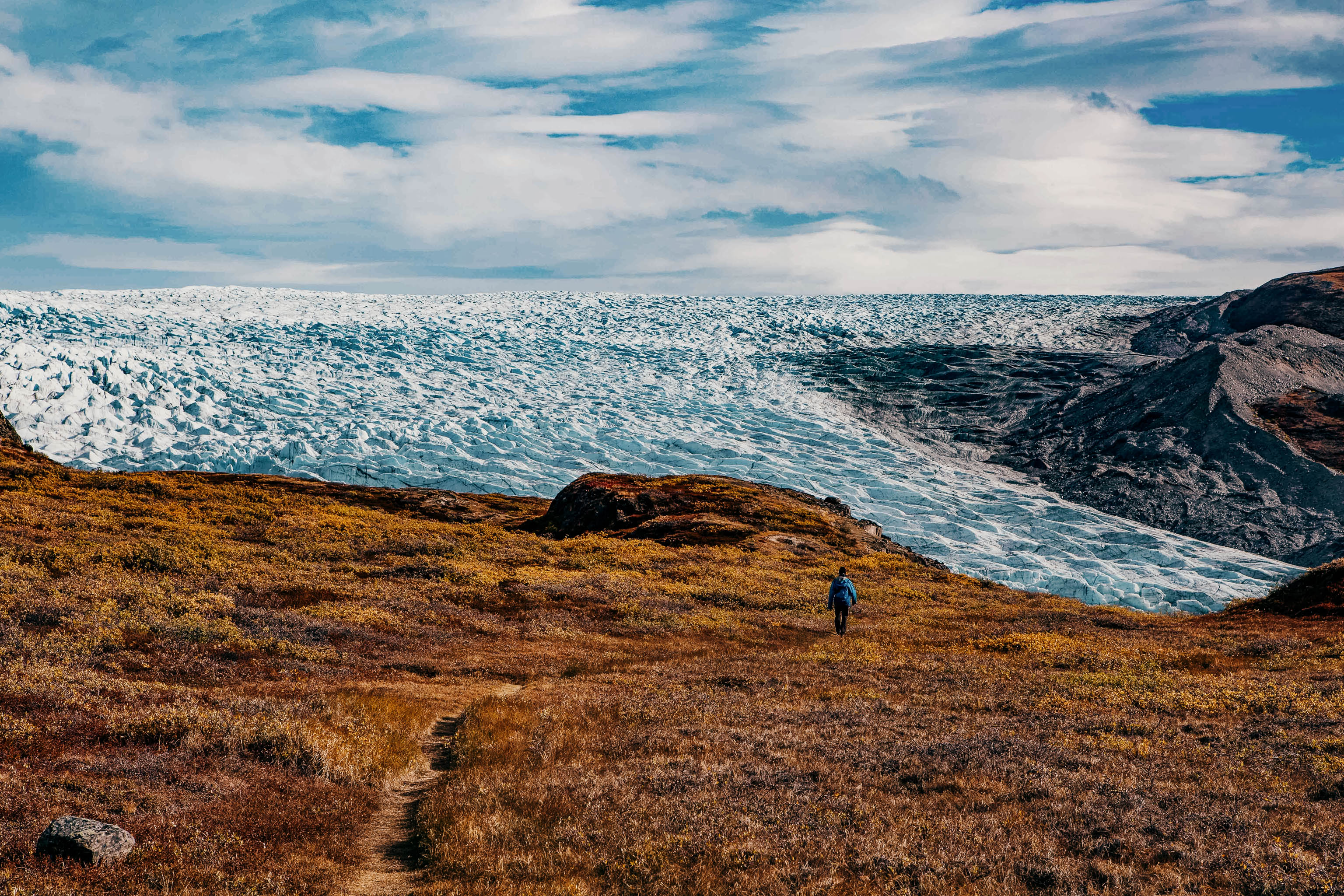
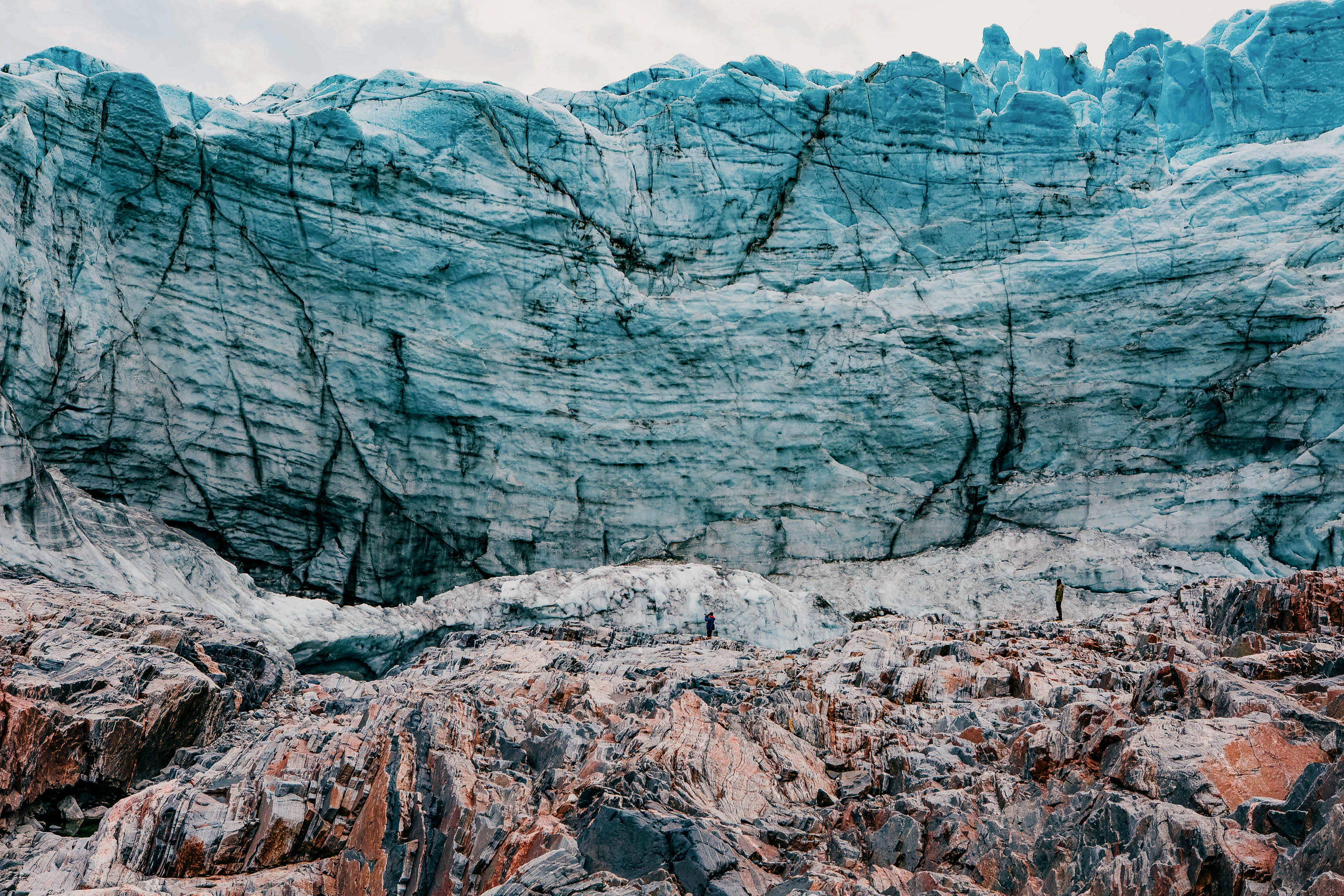
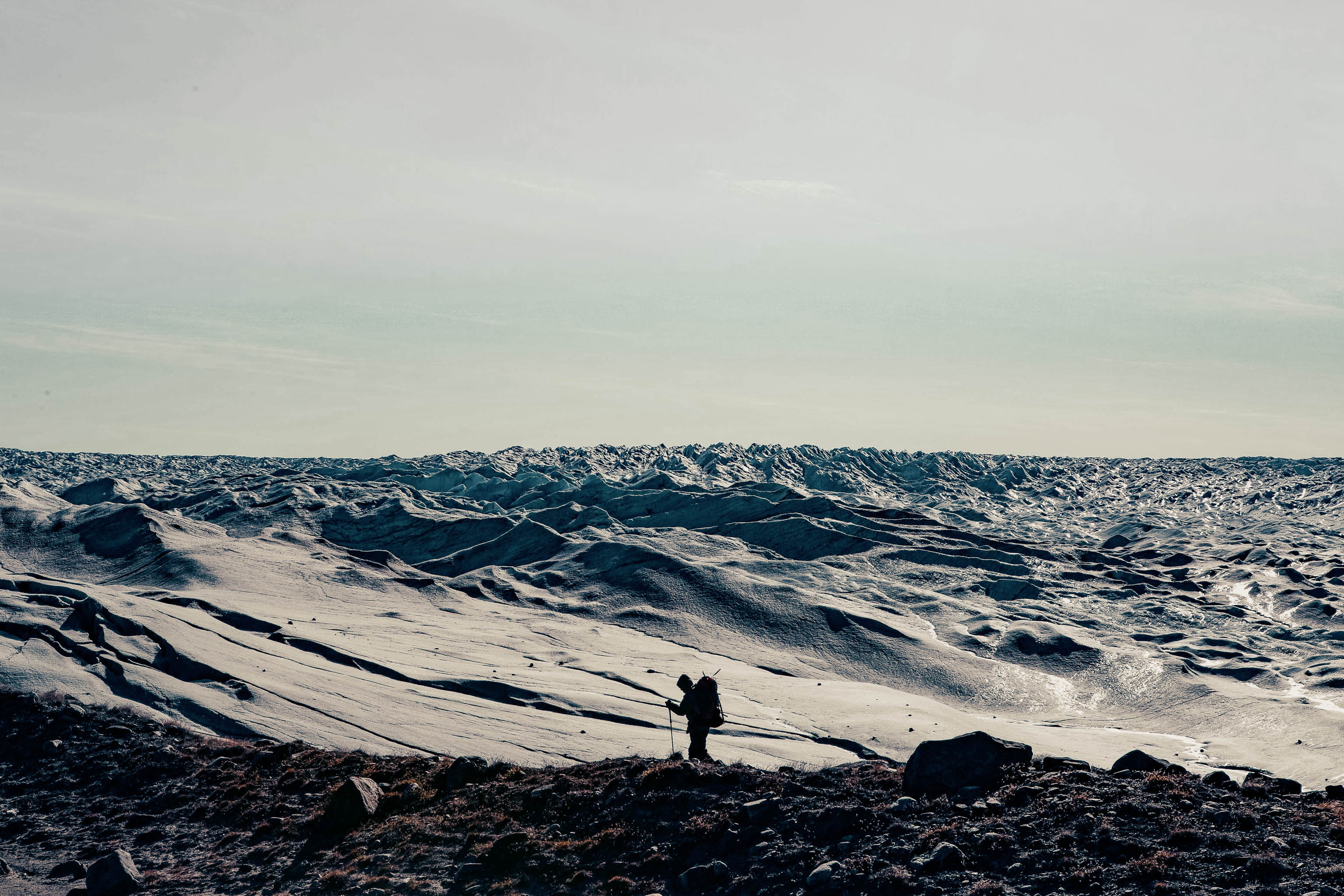
Two days later, it’s time for us to take leave of Greenland at the same, bleak spot where we started. And yet, we see Kangerlussuaq through different eyes now. Not as a romantic tourist destination with picturesque Inuit culture, but as the door to another world – the genuine, powerful and poetic wilderness of the breathtakingly-beautiful Arctic. And in my head, I’m already hatching plans for my next Greenland trekking trip …
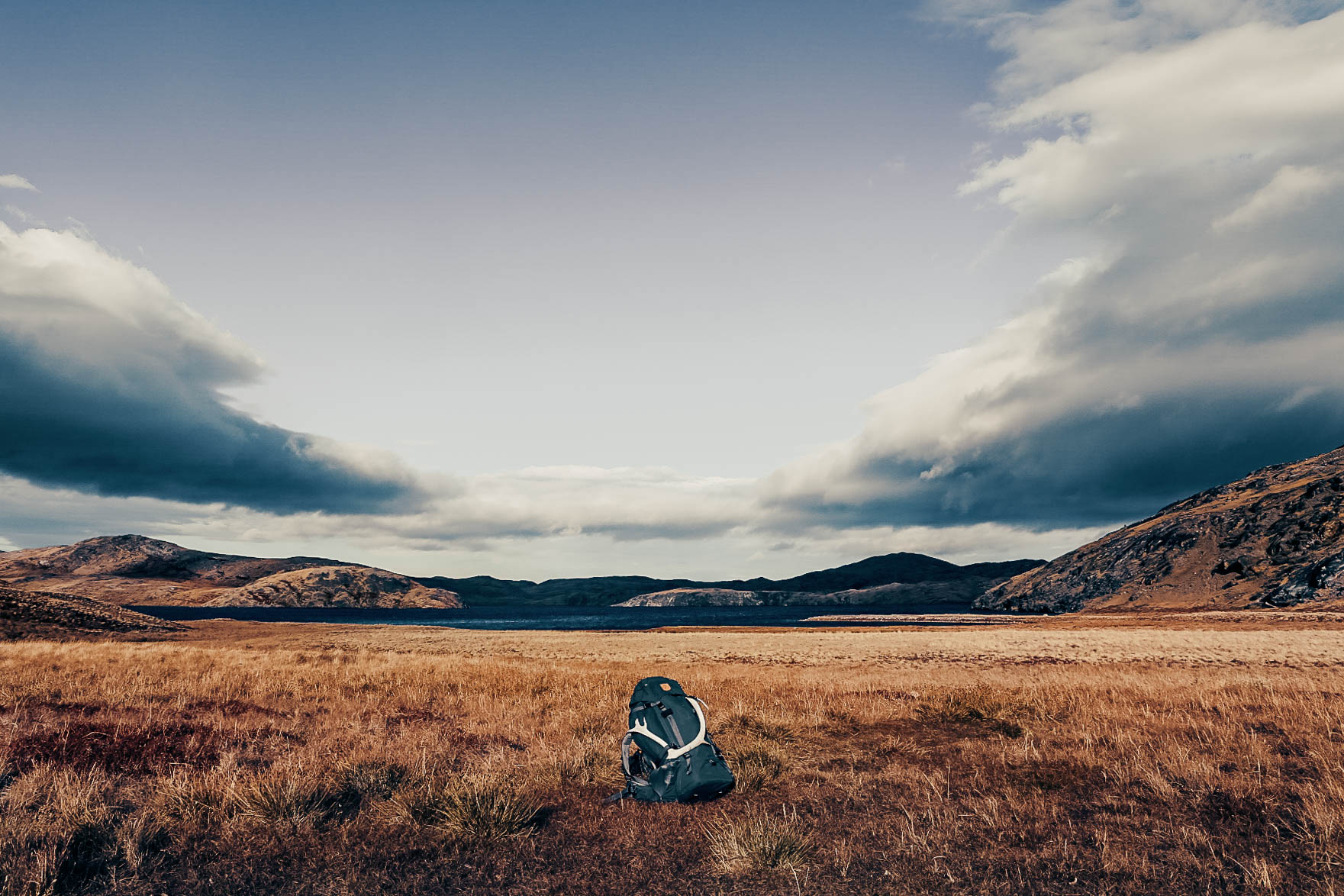
Trekking West Greenland: Wilderness adventure
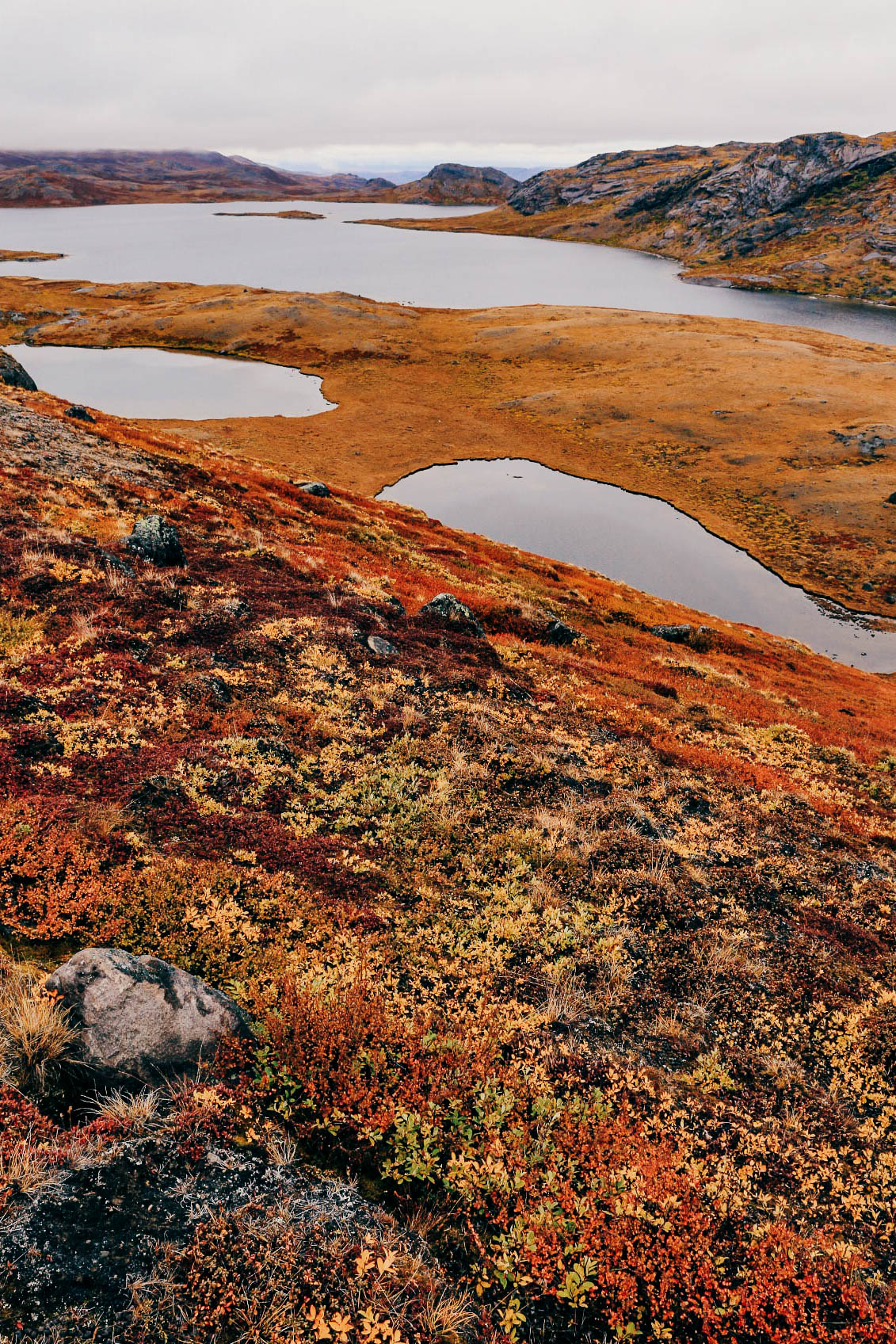
Best time for a Greenland trekking tour: Mid-June to mid-September (depending on how much you like mosquitoes).
General Information
Greenland is the world’s largest island and covers a total area of nearly 2.2 million km2. This means it’s the same size as France, Spain, Germany, Italy, Austria, Denmark and the United Kingdom combined. Yet, while these countries together have a population of around 340 million, Greenland has just 56,000 inhabitants. There are virtually no roads between its settlements. Some 17,000 of all its inhabitants live in Nuuk, the country’s capital in the south-western corner of the island. From 1814 to 1953 Greenland was a Danish colony. In 1953, Greenland’s colonial status ended and the island was incorporated into the Danish realm. Since 1 May 1979, Greenland has been a sovereign state. Although Denmark maintains control of foreign affairs and defence, Greenland has autonomous self-government with its own parliament.
Languages
Greenlandic, Danish
Currency
Danish Krone (1 EUR = 7.45 DKK)
Time zone
UTC−04:00
Best time to travel to Greenland for trekking trips
Mid-June to mid-September (depending on how much you like mosquitoes). Daytime temperatures range from 8° to 25°C. At night, it can drop below 0°C. However, in the area around Nuuk, these months see particularly heavy rainfall.
Geography
Barren, hilly, mountainous terrain without paths or trails. Glacier moraines with potentially dangerous sink holes. Most of Greenland’s lakes and rivers are drinking water quality.
Trip planning
There are only a few outfits that offer challenging trekking and hiking trips in West Greenland. Anyone planning to organise their own trip should have extensive wilderness trekking and navigation experience.
Provisions
Food is relatively expensive, as apart from fish, certain meats and ice cubes, everything else has to be imported.
Equipment
This will depend on whether you are organising your own trip or travelling with a Greenland tour organiser. Basically, you’ll need full trekking equipment. For tips and tricks about the right equipment, see our packing list for trekking adventures.
Travel
By plane either via Copenhagen (Denmark) or Reykjavík (Iceland) to Kangerlussuaq. There are also inland flight connections from Nuuk and Ilulissat.
Maps
Cicerone Trekking in Greenland: The Arctic Circle Trail; Cicerone Press
Hiking Map West Greenland 08: Kangerlussuaq 1:100.000

